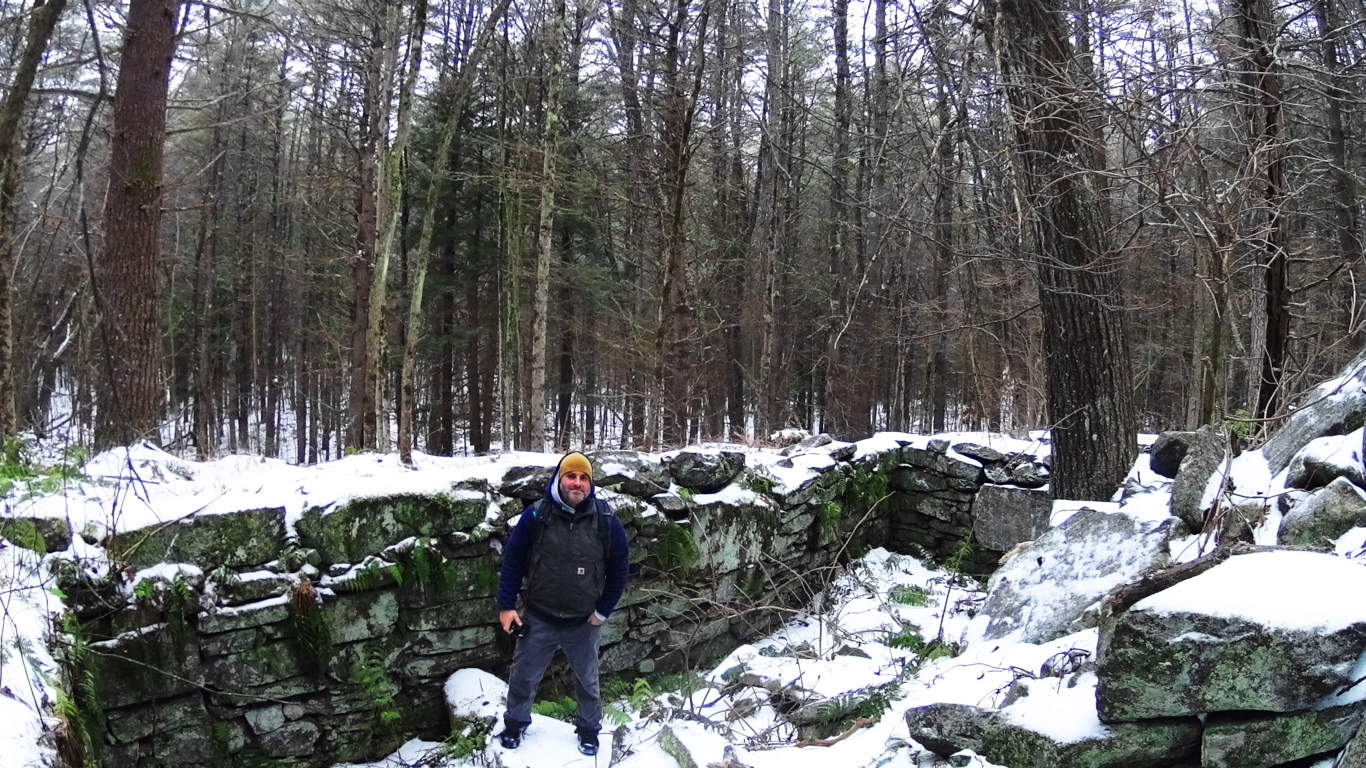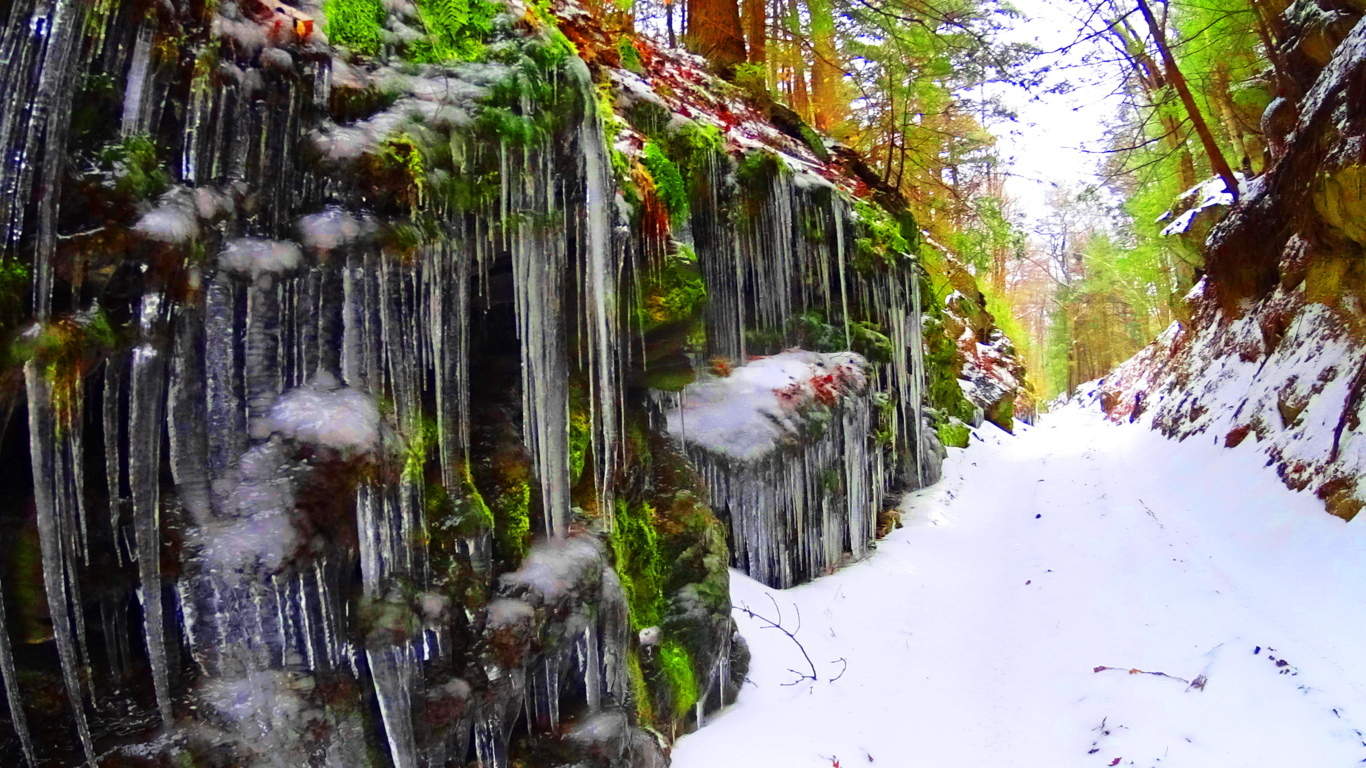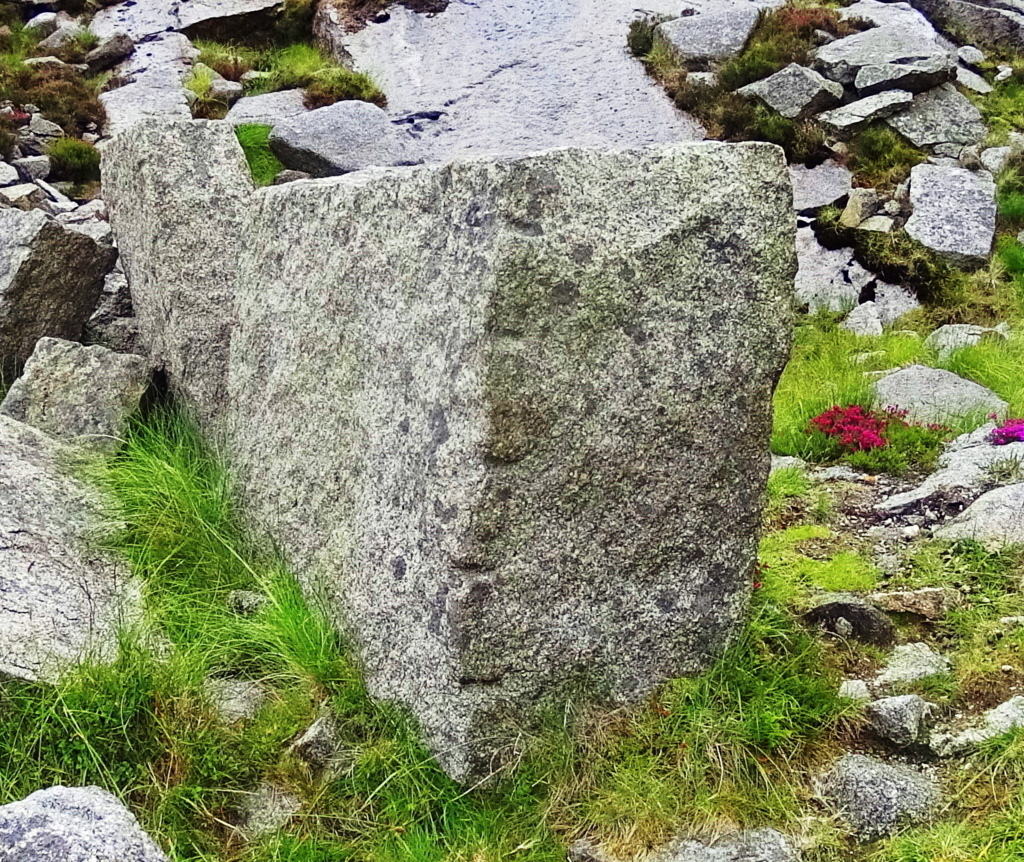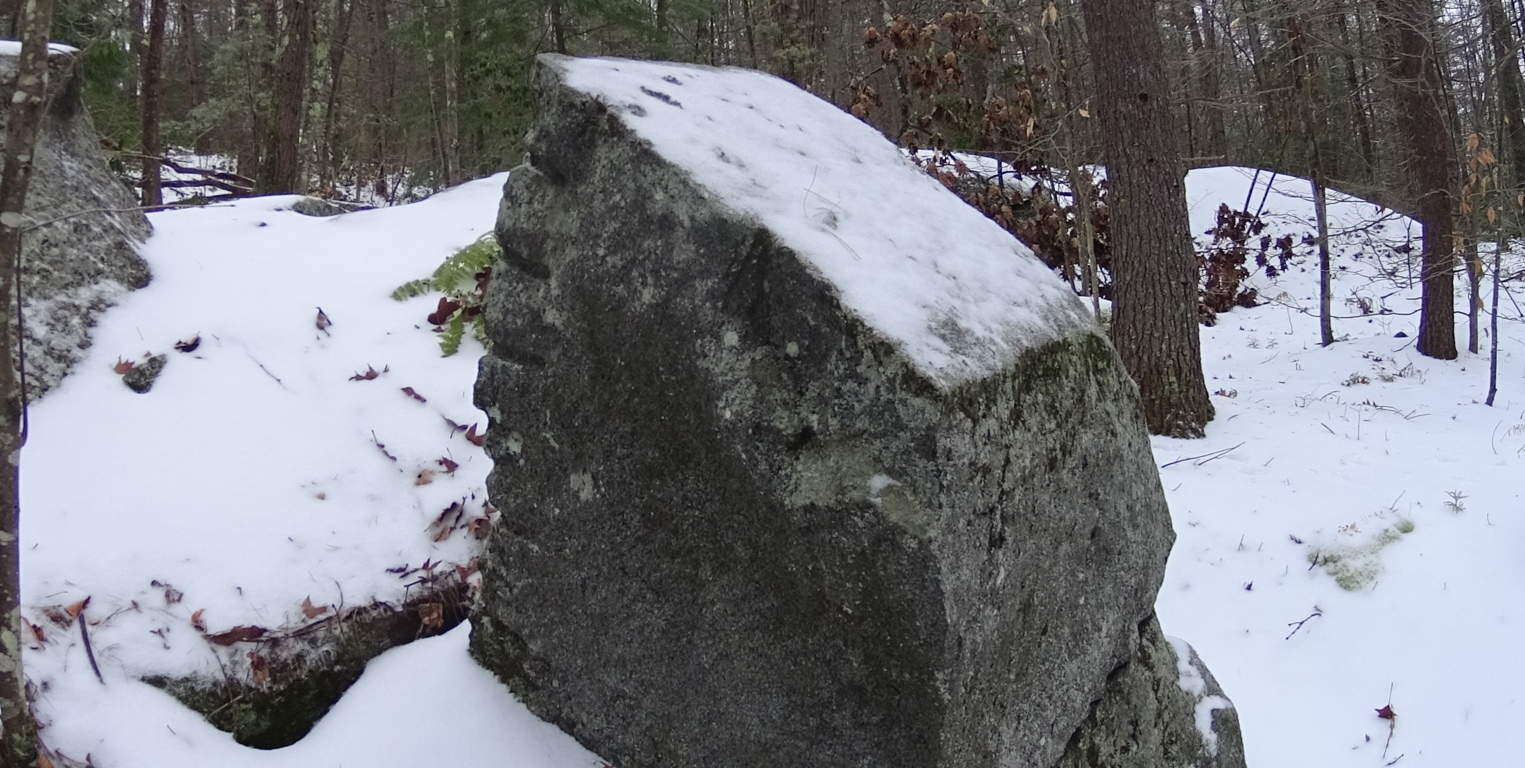Rattlesnake Mountain
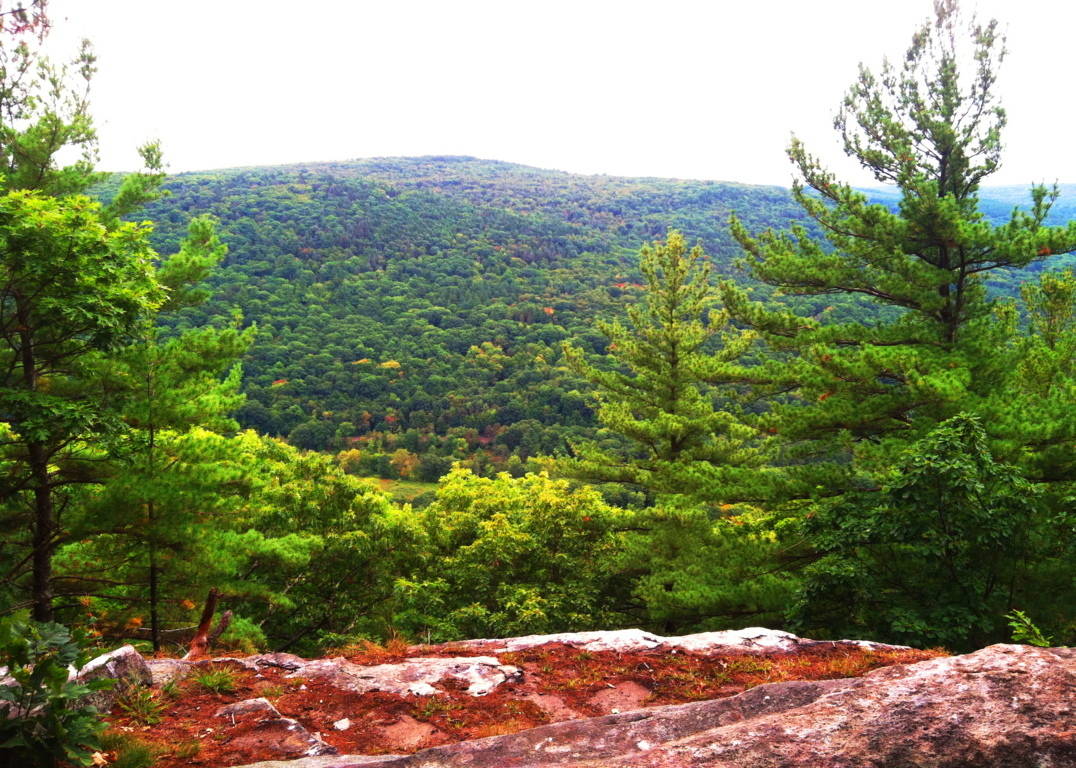
Location: Erving, Massachusetts
Elevation: 1,067 ft
Note: Running along the northern border of Massachusetts is a unique set of rolling “small-mountain” ranges. These elevations are too tall to be called mere hills, but too small to be known as full-fledged mountains. Rattlesnake Mountain sits in the heart of this range in the northwestern portion of the state, surrounded by similar small-mountain peaks in Monroe and Savoy to the west, with Watatic to the east. The woodsy entrance for the car park leading to the main trail at Rattlesnake Mountain is nearly hidden, just off Rt 2A, about 100 yards from Maple Ave, in the picturesque country-town of Erving.
The trail at Rattlesnake’ is essentially a 2.4 mile loop that broadly encircles a massive metamorphic rock ledge. Known as The Farley Ledges, this precipice is enveloped by trees, standing about 220 feet high, and about a mile-and-a-half wide, east to west (image below)…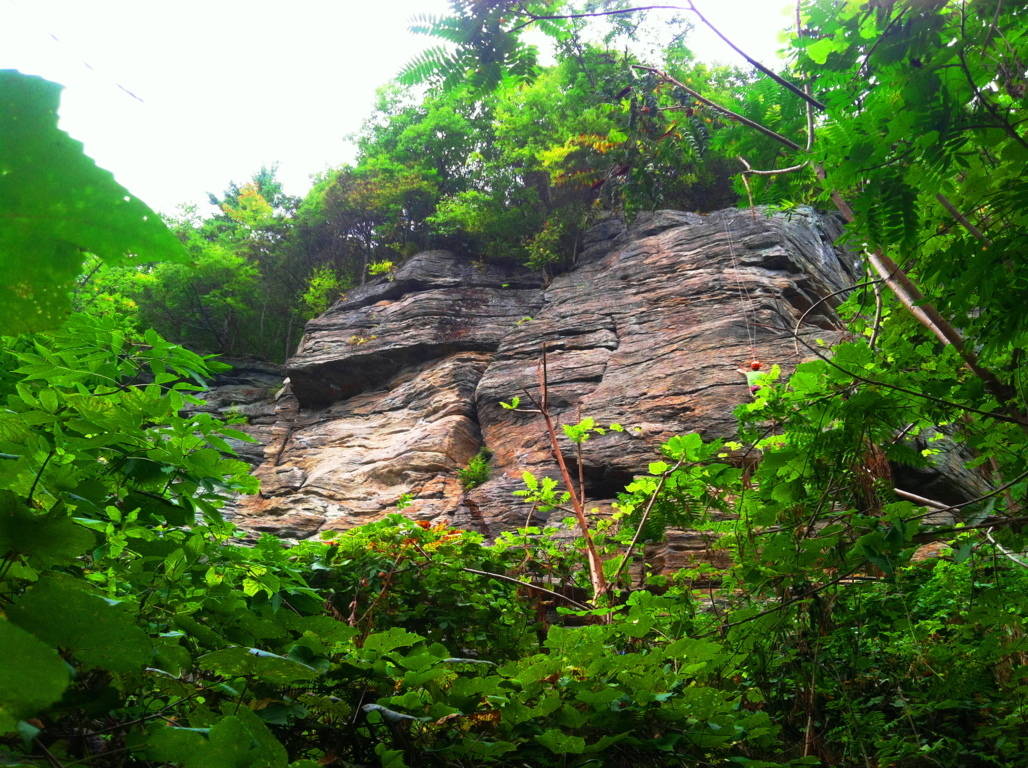 Rock climbers scale this ledge in a world all their own, paying very little attention to the boulders and stones that line the ground below. If they did pay attention, a closer look at these stones reveal something pretty amazing. Here at Rattlesnake’ there is a megalithic mystery that reaches deep into the heart of Massachusetts forests and mountains, a mystery that most often goes unspoken. Simply put, there are hundreds of gigantic cut stones which are measured and marked inundating the forest floor just beneath the ridge. There are pathways that run directly into this “stone playground” where various crafted stones sit (image below)…
Rock climbers scale this ledge in a world all their own, paying very little attention to the boulders and stones that line the ground below. If they did pay attention, a closer look at these stones reveal something pretty amazing. Here at Rattlesnake’ there is a megalithic mystery that reaches deep into the heart of Massachusetts forests and mountains, a mystery that most often goes unspoken. Simply put, there are hundreds of gigantic cut stones which are measured and marked inundating the forest floor just beneath the ridge. There are pathways that run directly into this “stone playground” where various crafted stones sit (image below)…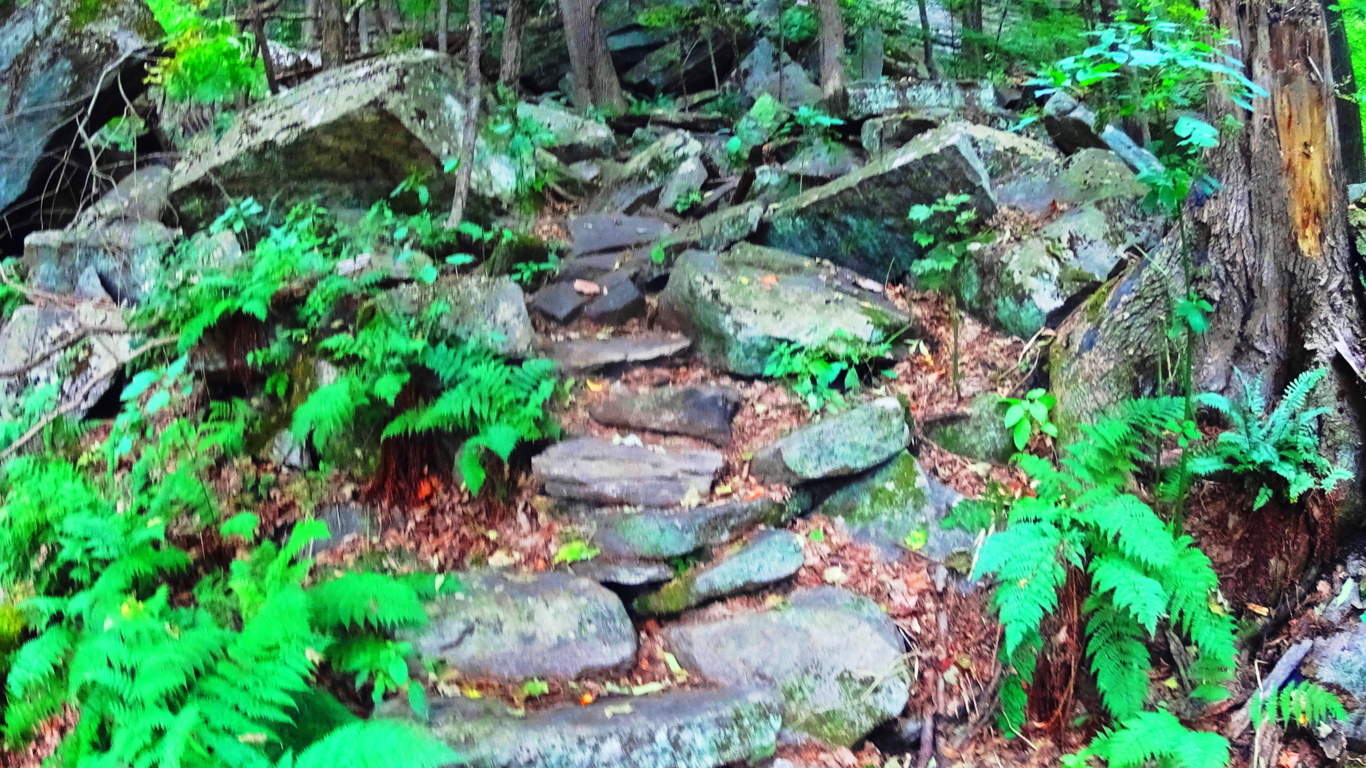 Other megaliths are fixed in some pretty curious positions in arrangements near the trail, winding like a display along the ledge (image below)…
Other megaliths are fixed in some pretty curious positions in arrangements near the trail, winding like a display along the ledge (image below)…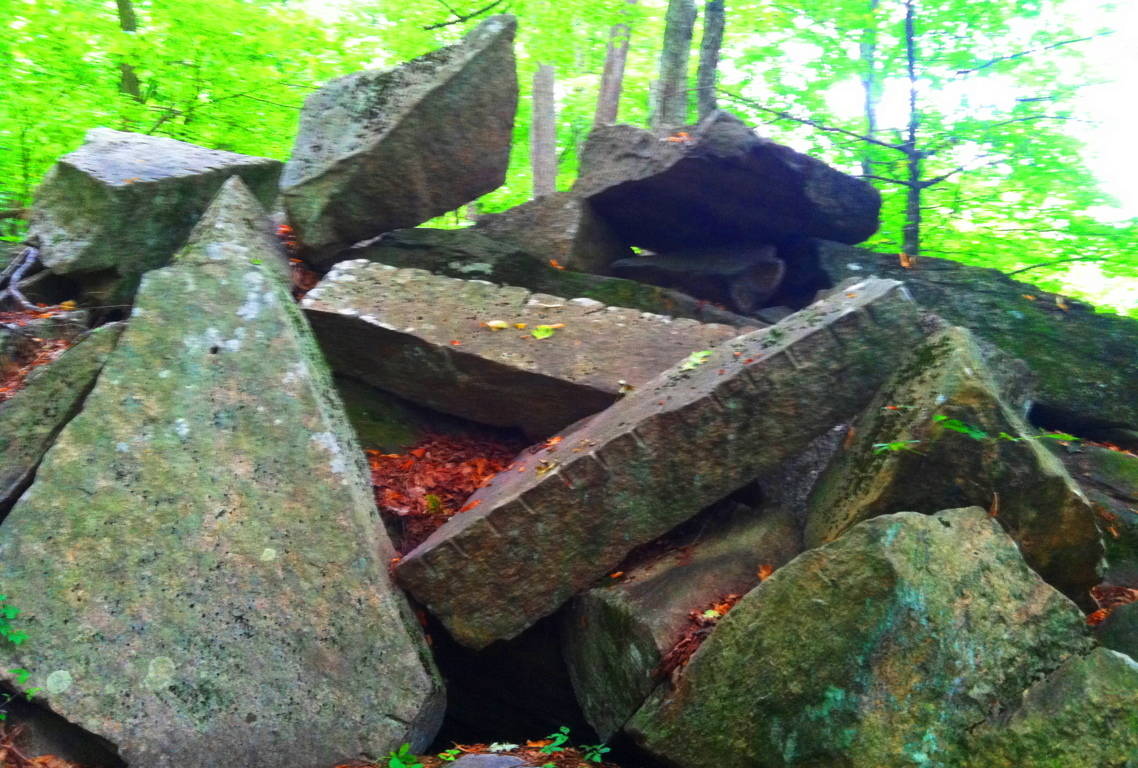 Some of the stones look to be placed in specific places, while others look to have been tossed about like giant toy blocks. The incrementation markings on the huge stones are not in inches or centimeters, they are some other form of measurement entirely. The image above is of two rather long rectangular pieces thrown into a pile at Rattlesnake’. Pieces exactly like this exist at the pass of Mount Bearnagh in Ireland (image below)…
Some of the stones look to be placed in specific places, while others look to have been tossed about like giant toy blocks. The incrementation markings on the huge stones are not in inches or centimeters, they are some other form of measurement entirely. The image above is of two rather long rectangular pieces thrown into a pile at Rattlesnake’. Pieces exactly like this exist at the pass of Mount Bearnagh in Ireland (image below)… They also exist at Lynn Woods Reserve in Lynn Massachusetts (image below)…
They also exist at Lynn Woods Reserve in Lynn Massachusetts (image below)…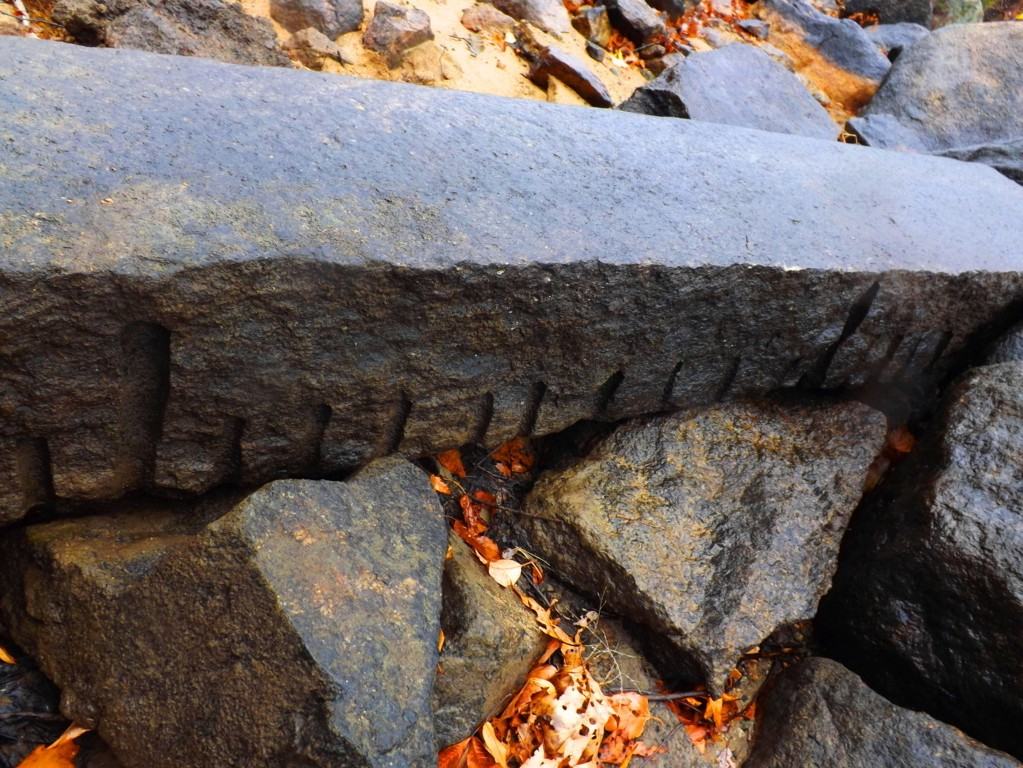 which is 40 miles east of here. Look at the incrementation on the stone in Lynn Woods; between the long marks are 9 short marks. What system of measurement uses increments of 9? And there are countless other places throughout New England where this specific type of rectangular piece can be found. As documented proof of these megalithic stones is slowly compiled, it becomes clear that our modern culture is built directly over what was once a megalithic culture. In old-growth forests and mountain ridges where houses have never been built the evidence for this culture still remains. And please remember, these stones are several tons each, if not more. Whoever cut and placed them, had the ability to do so, and without strain. Other stones beneath the ridge are smaller square pieces (image below)…
which is 40 miles east of here. Look at the incrementation on the stone in Lynn Woods; between the long marks are 9 short marks. What system of measurement uses increments of 9? And there are countless other places throughout New England where this specific type of rectangular piece can be found. As documented proof of these megalithic stones is slowly compiled, it becomes clear that our modern culture is built directly over what was once a megalithic culture. In old-growth forests and mountain ridges where houses have never been built the evidence for this culture still remains. And please remember, these stones are several tons each, if not more. Whoever cut and placed them, had the ability to do so, and without strain. Other stones beneath the ridge are smaller square pieces (image below)…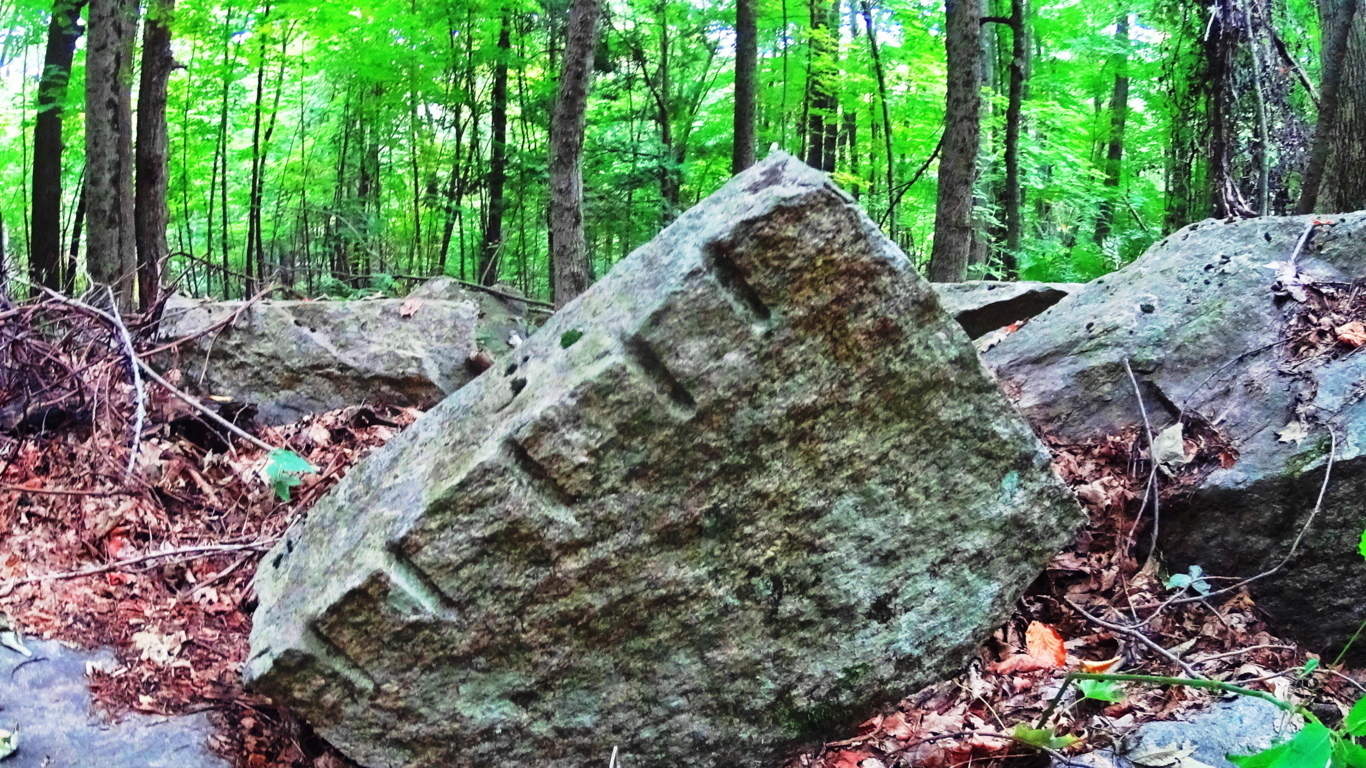
And more stones can be found here, some covered by countless seasons, or are partially entrenched in the earth. It becomes clear that someone literally went to work in this area, and was utilizing megalithic size stones the way a carpenter uses wood blocks (images below)…
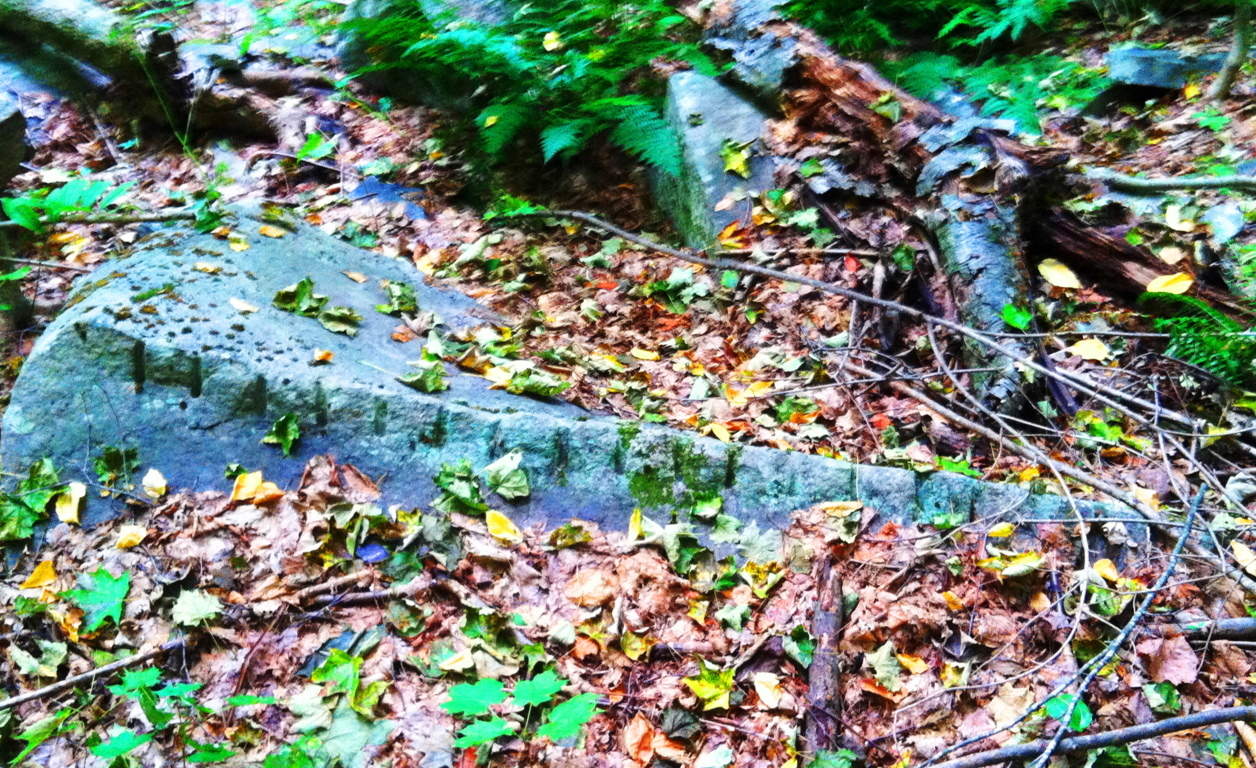
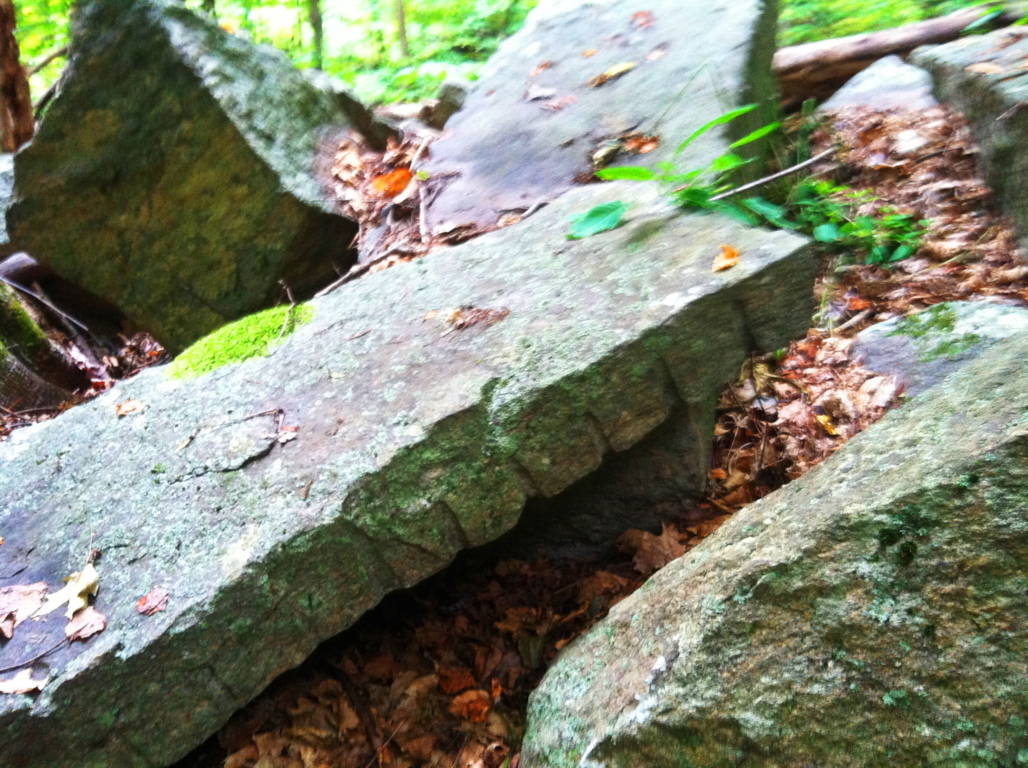
As you head east along the initial trail, passing by these monoliths and huge fixtures, there are other stones that emerge which are relevant to the patterns of megaliths in New England. The equilateral triangle has showed its face in stone in almost every deep woods hiking trail and reserve from northern Maine to western Massachusetts. Here, somehow fixed into a boulder, was a perfect equilateral triangle (image below)…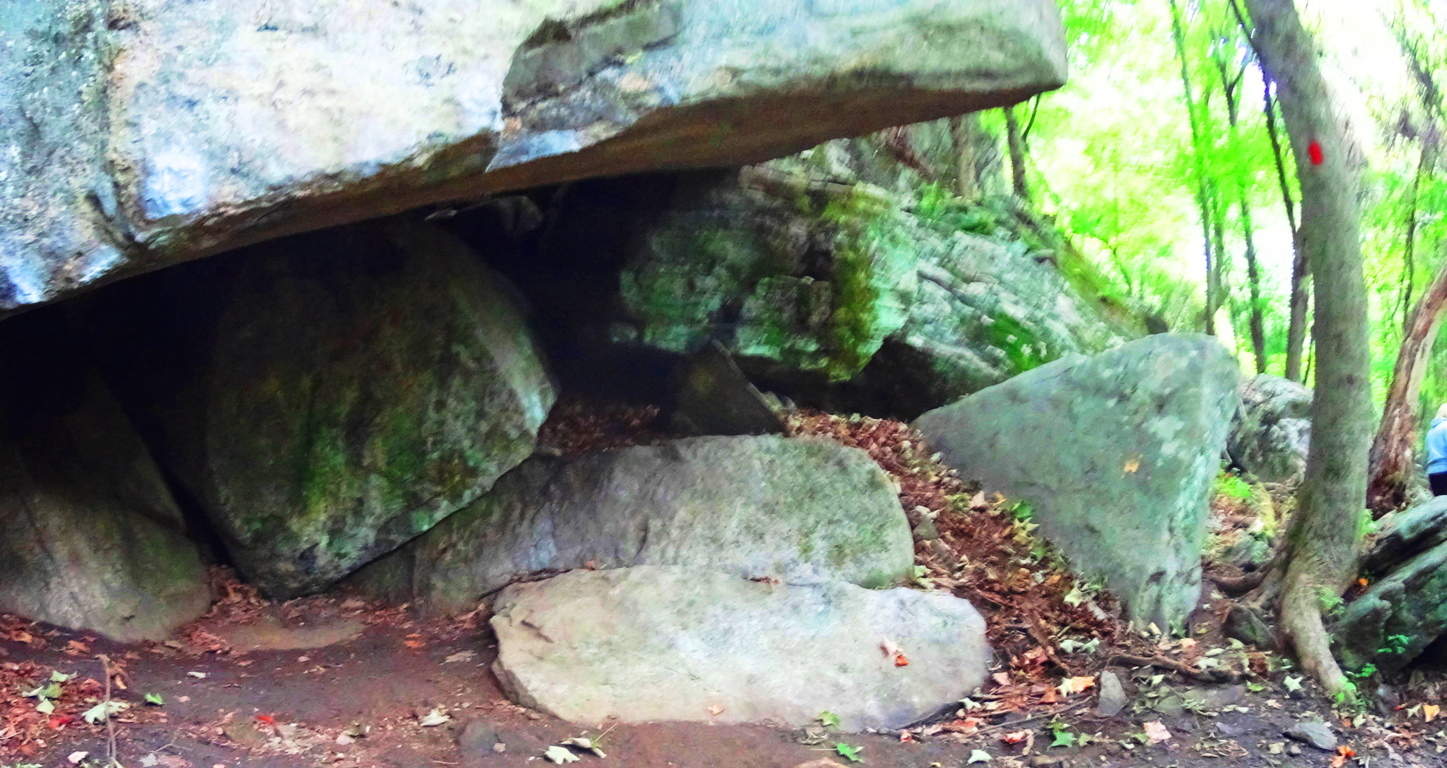 It is at the center of this massive fixture, with a cubicly cut stone to its left, and another perfect equilateral to its right. All of this is under a rock precipice serving as a roof which looks to weigh about 100 tons. The overall symmetrical setting is above (image above), with the central equilateral in the middle, sitting on a perfectly leveled shelf of stone. Please understand, this stone is part of the boulder beneath it; it was carved out to protrude specifically in this fashion. I could not move it. Here’s a closer look (image below)
It is at the center of this massive fixture, with a cubicly cut stone to its left, and another perfect equilateral to its right. All of this is under a rock precipice serving as a roof which looks to weigh about 100 tons. The overall symmetrical setting is above (image above), with the central equilateral in the middle, sitting on a perfectly leveled shelf of stone. Please understand, this stone is part of the boulder beneath it; it was carved out to protrude specifically in this fashion. I could not move it. Here’s a closer look (image below)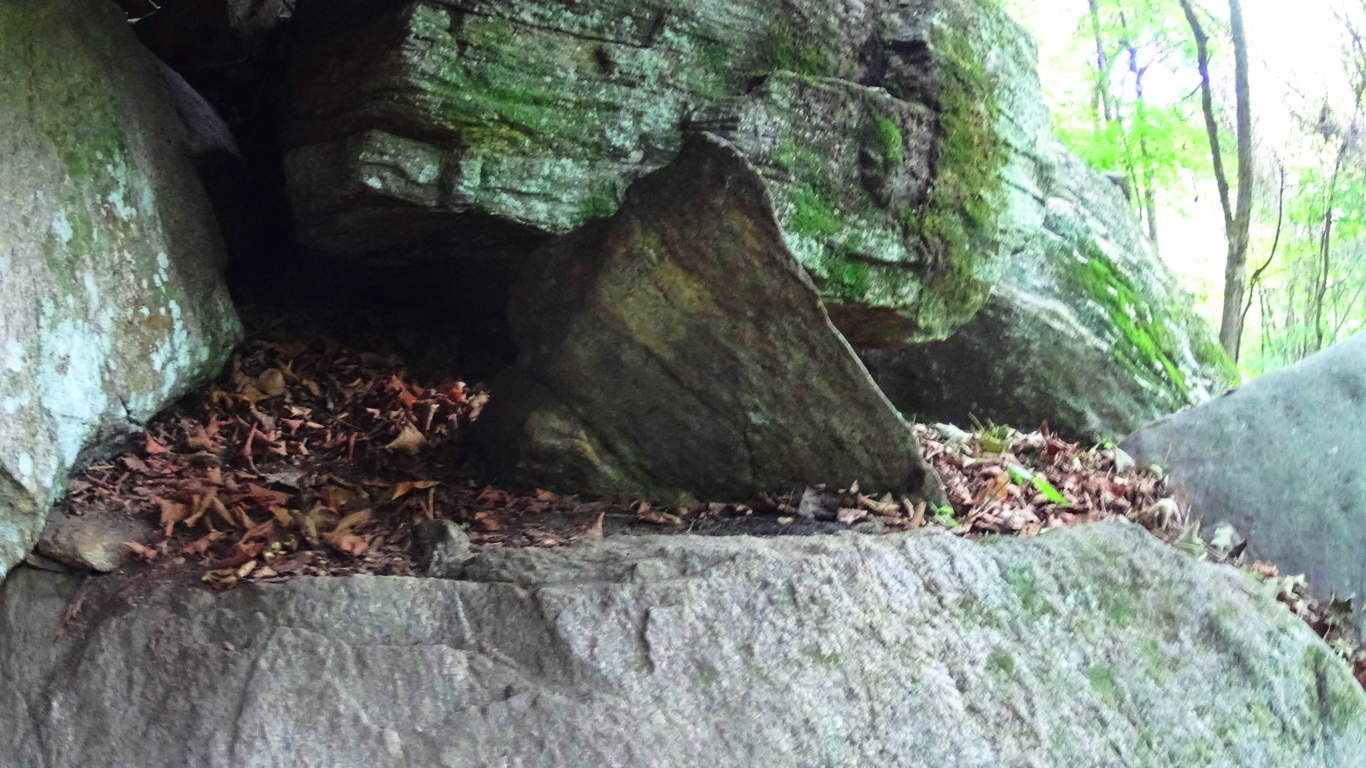 Just a few feet up the trail is another fixture with a equilateral triangle that is guarded by several massive stones. This stone is not only an equilateral, but is a three sided prism that is connected to the boulder beneath it. (image below)
Just a few feet up the trail is another fixture with a equilateral triangle that is guarded by several massive stones. This stone is not only an equilateral, but is a three sided prism that is connected to the boulder beneath it. (image below)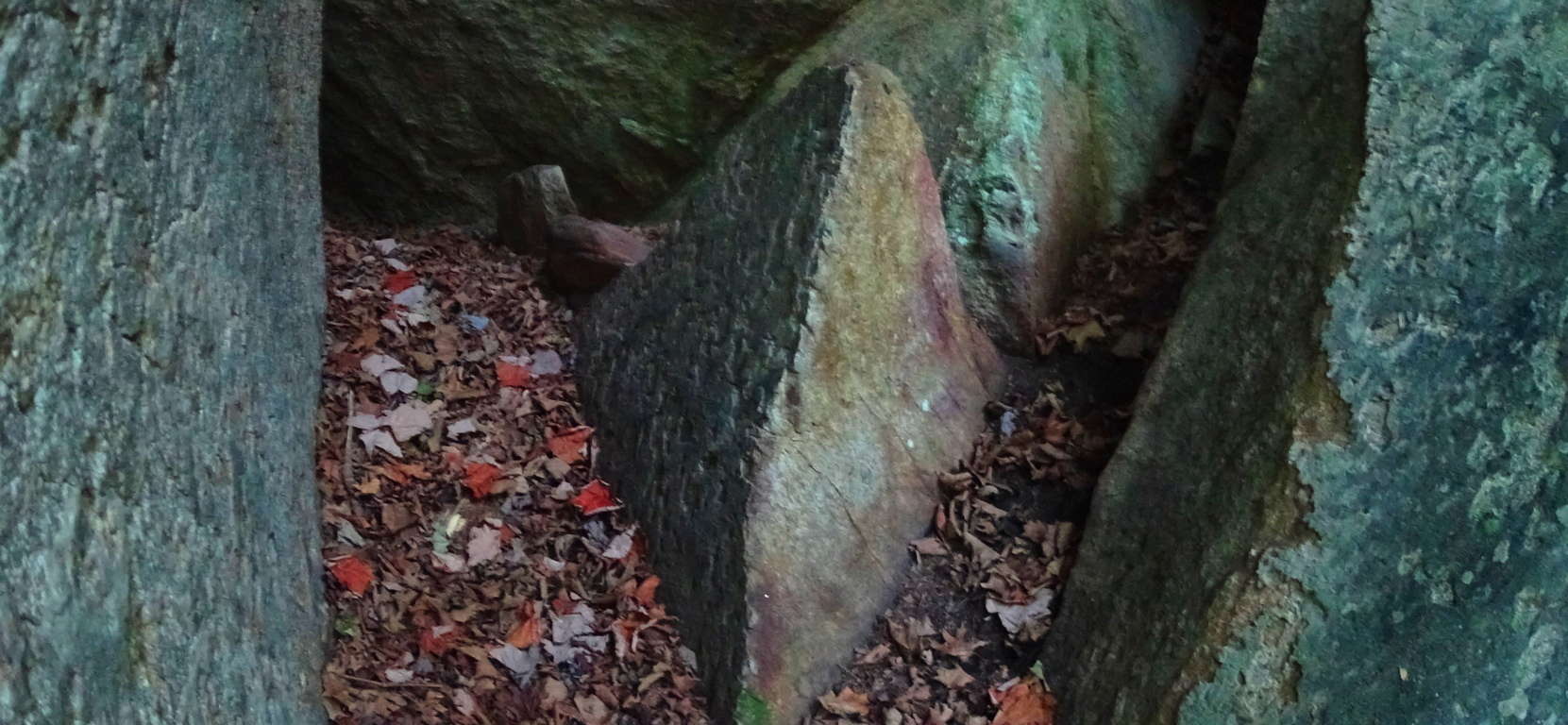 In the woods of Upton Massachusetts there are granite cut equilateral prisms attached to the boulders beneath them (image below), extremely similar to these stones found at Rattlesnake’.
In the woods of Upton Massachusetts there are granite cut equilateral prisms attached to the boulders beneath them (image below), extremely similar to these stones found at Rattlesnake’. I believe the Triangle is the megalithic “calling card” of the ancient culture that once dwelt in the hills of New England, just as the Spiral was the calling card of the megalithic culture that once dwelt once dwelt in Ireland. If you recognize this, then you will realize that New England, in its own way, is a landscape that is just as mythical and beautiful as those traditionally endeared in England, Ireland, Scotland, and Wales. When you hike through these small mountains, you’re hiking through zones of ancient mysteries yet to be solved, but can be seen right before your eyes. The trees of woods are spaced amicably, with small groves of baby pines and birches emerging in various areas. Enjoy these beautiful groves (image below )…
I believe the Triangle is the megalithic “calling card” of the ancient culture that once dwelt in the hills of New England, just as the Spiral was the calling card of the megalithic culture that once dwelt once dwelt in Ireland. If you recognize this, then you will realize that New England, in its own way, is a landscape that is just as mythical and beautiful as those traditionally endeared in England, Ireland, Scotland, and Wales. When you hike through these small mountains, you’re hiking through zones of ancient mysteries yet to be solved, but can be seen right before your eyes. The trees of woods are spaced amicably, with small groves of baby pines and birches emerging in various areas. Enjoy these beautiful groves (image below )… 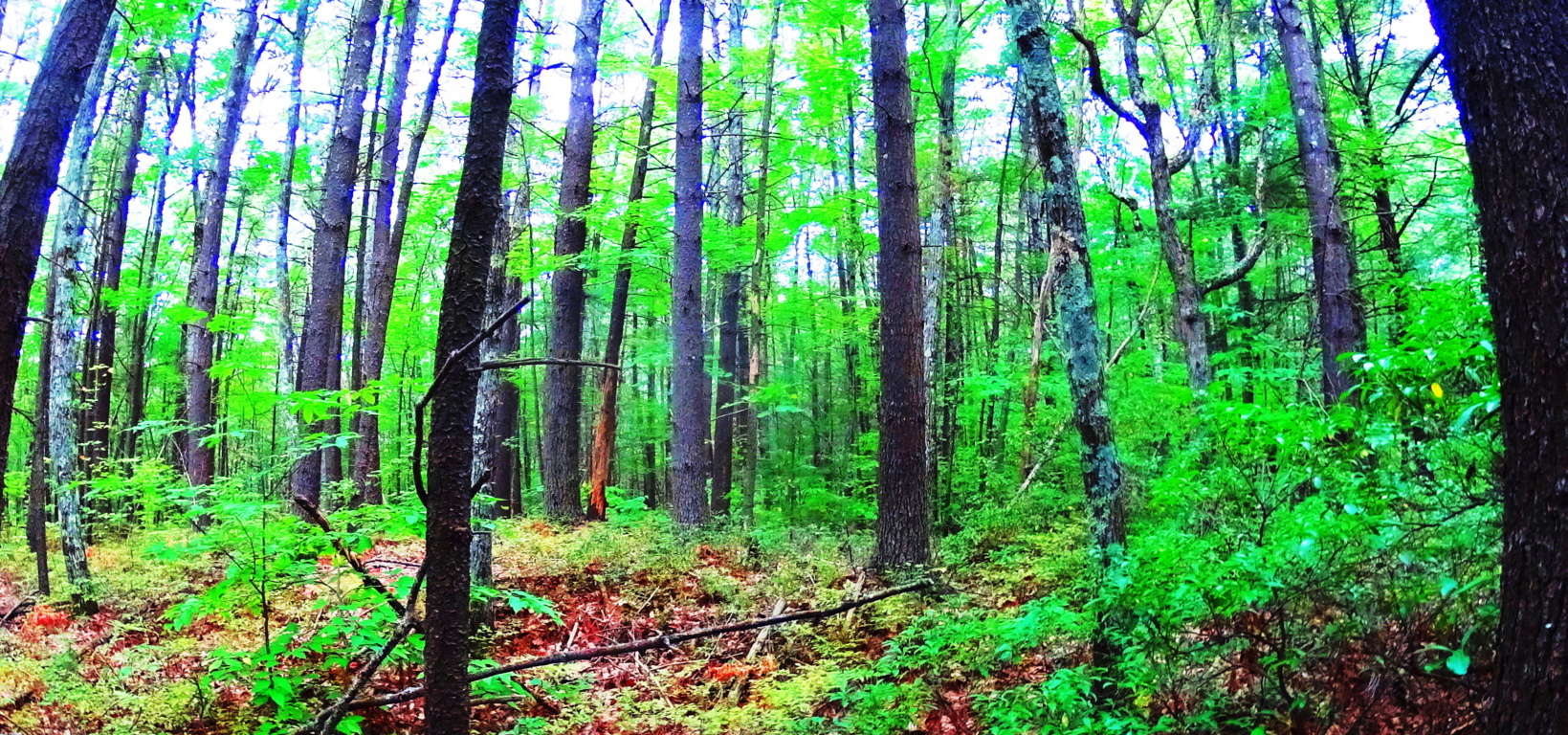 With all of this existing right infornt of you, it can be hard to get back to the natural beauty of the trail ahead, which is another wonderful aspect to hiking the forests of New England and Rattlesnake Mountain. As you step away from these mysterious alters beneath the grand ledge, continue east. After about 1/4 mile you will come to a stream rolling down the mountain from above (image below).
With all of this existing right infornt of you, it can be hard to get back to the natural beauty of the trail ahead, which is another wonderful aspect to hiking the forests of New England and Rattlesnake Mountain. As you step away from these mysterious alters beneath the grand ledge, continue east. After about 1/4 mile you will come to a stream rolling down the mountain from above (image below). Turn to follow this stream upward, as you are now on the eastern extremity of the trail (image below).
Turn to follow this stream upward, as you are now on the eastern extremity of the trail (image below).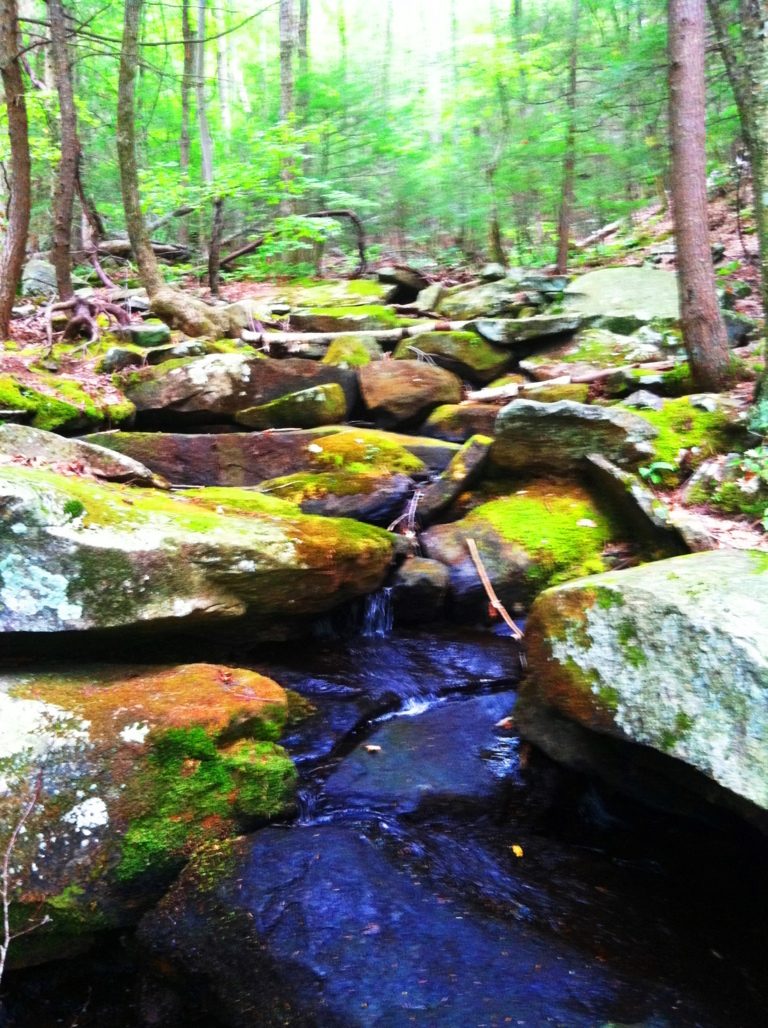
This waterway is so similar to Celtic scenes that you might find at Tollymore Forest in Ireland, or Killarney National Park. The rocks are strewn over the flowing water, with glowing moss beyond. Following the waterways clears the senses and improves your “sound palate” with the soft trickling and smooth rolling of water over stone. This consistency of sound eliminates the sensory overload we experience in our daily lives, which have become controlled blasts of commercial intrusions. One walk along these streams can clear your head for days. Continue up the incline which follows the stream until the trail crosses over the water, to left, at the top of the hillside. The trail continues into an elevated old-growth forest with a classic New England blend of Oak, Maple, Pine, Beech, and Birch trees. Looking northward this forest continues all the way into Vermont.(image below)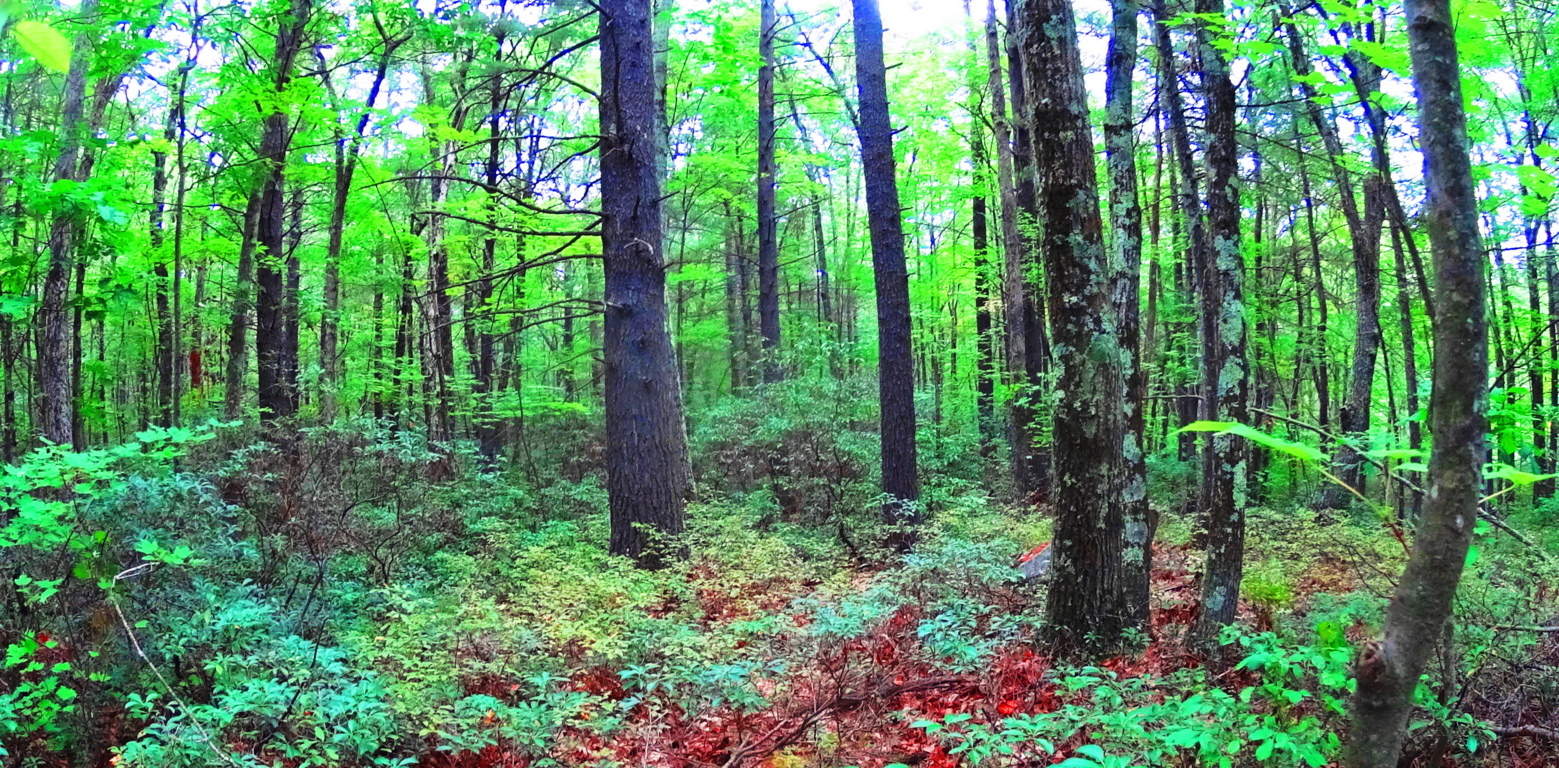 Continuing west on the elevated trail there are minature ledges with tiny pillars creating a tiny cavern on the underside of the precipice (image below)…
Continuing west on the elevated trail there are minature ledges with tiny pillars creating a tiny cavern on the underside of the precipice (image below)…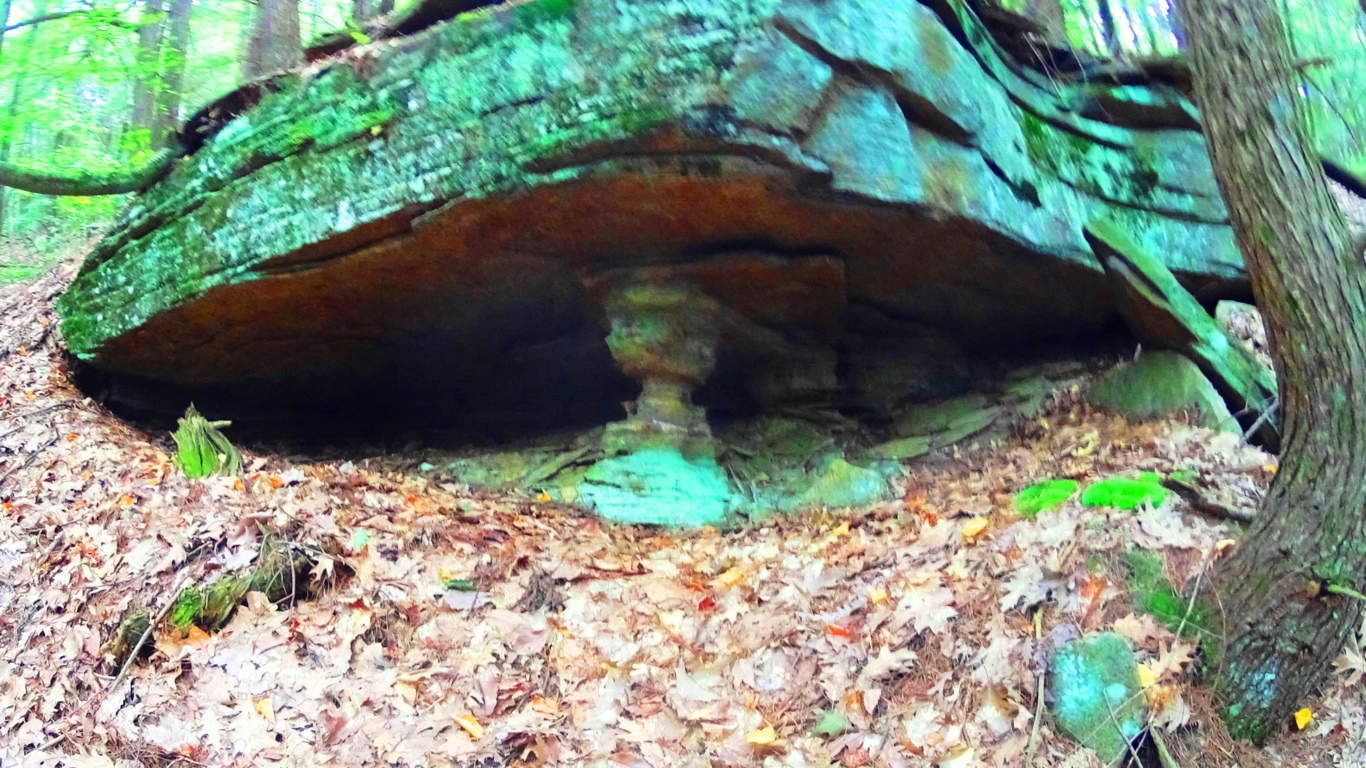 At Cavan Burren National Park in Ireland, where there are some of the most astounding Celtic megalithic monuments in the world, there are also notable stone ledges with the small pillars creating a cavern beneath the tiny granite ridge (image below)…
At Cavan Burren National Park in Ireland, where there are some of the most astounding Celtic megalithic monuments in the world, there are also notable stone ledges with the small pillars creating a cavern beneath the tiny granite ridge (image below)…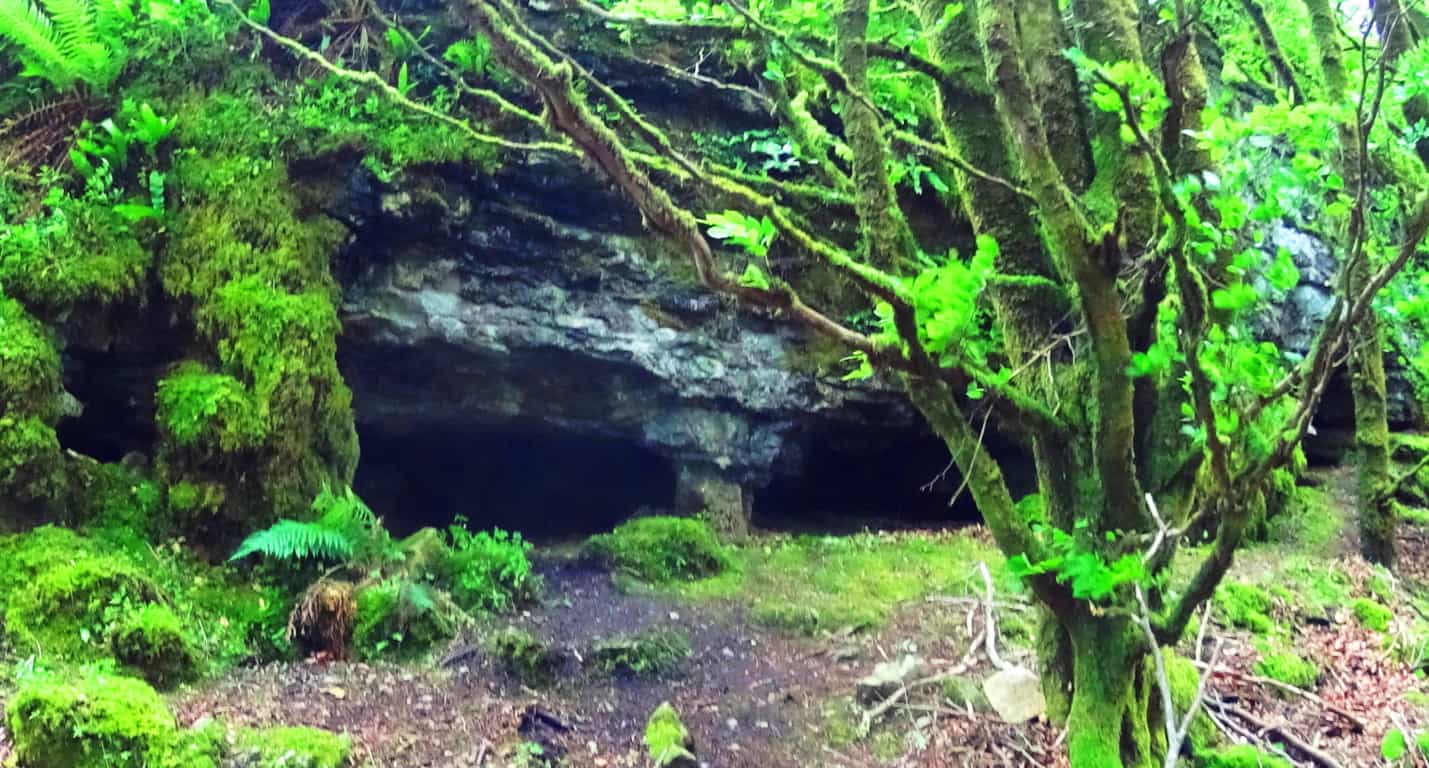 After passing these curious small pillars the trail continues west for about a mile, where other large flat cliffs emerge to the north. These gigantic shelves are layered in loose parallel shafts for 50 to 100 yards each, at about 45 feet in height. (image below)
After passing these curious small pillars the trail continues west for about a mile, where other large flat cliffs emerge to the north. These gigantic shelves are layered in loose parallel shafts for 50 to 100 yards each, at about 45 feet in height. (image below)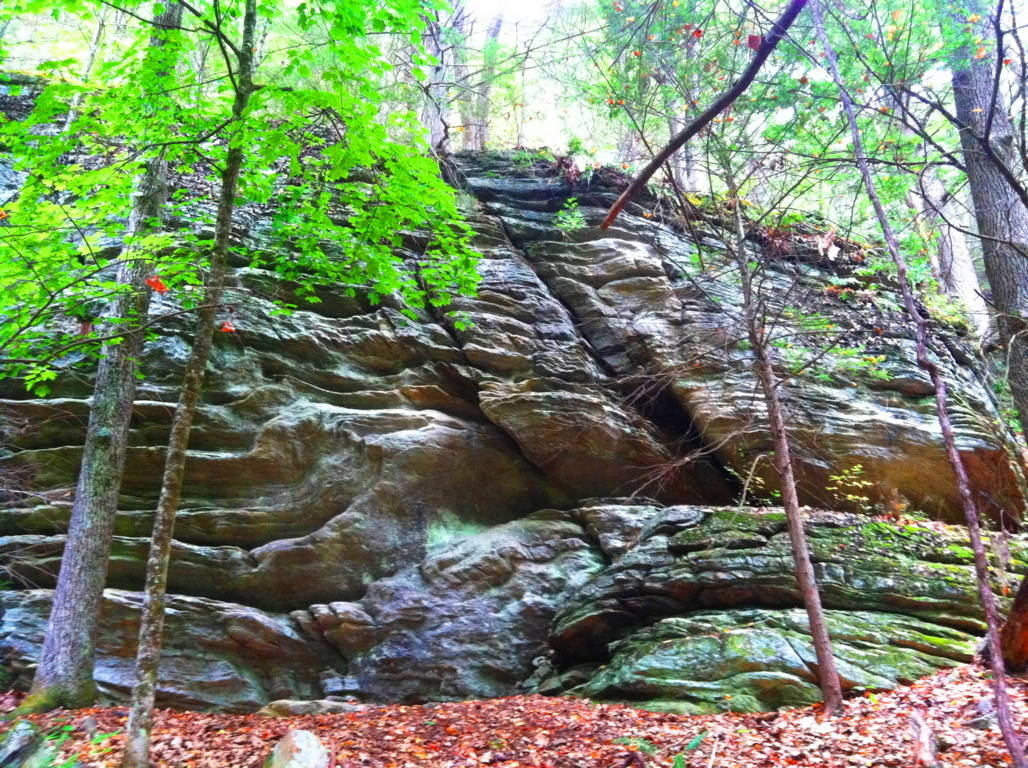
In some places there are small standing stones at the edges of these small cliffs (below)…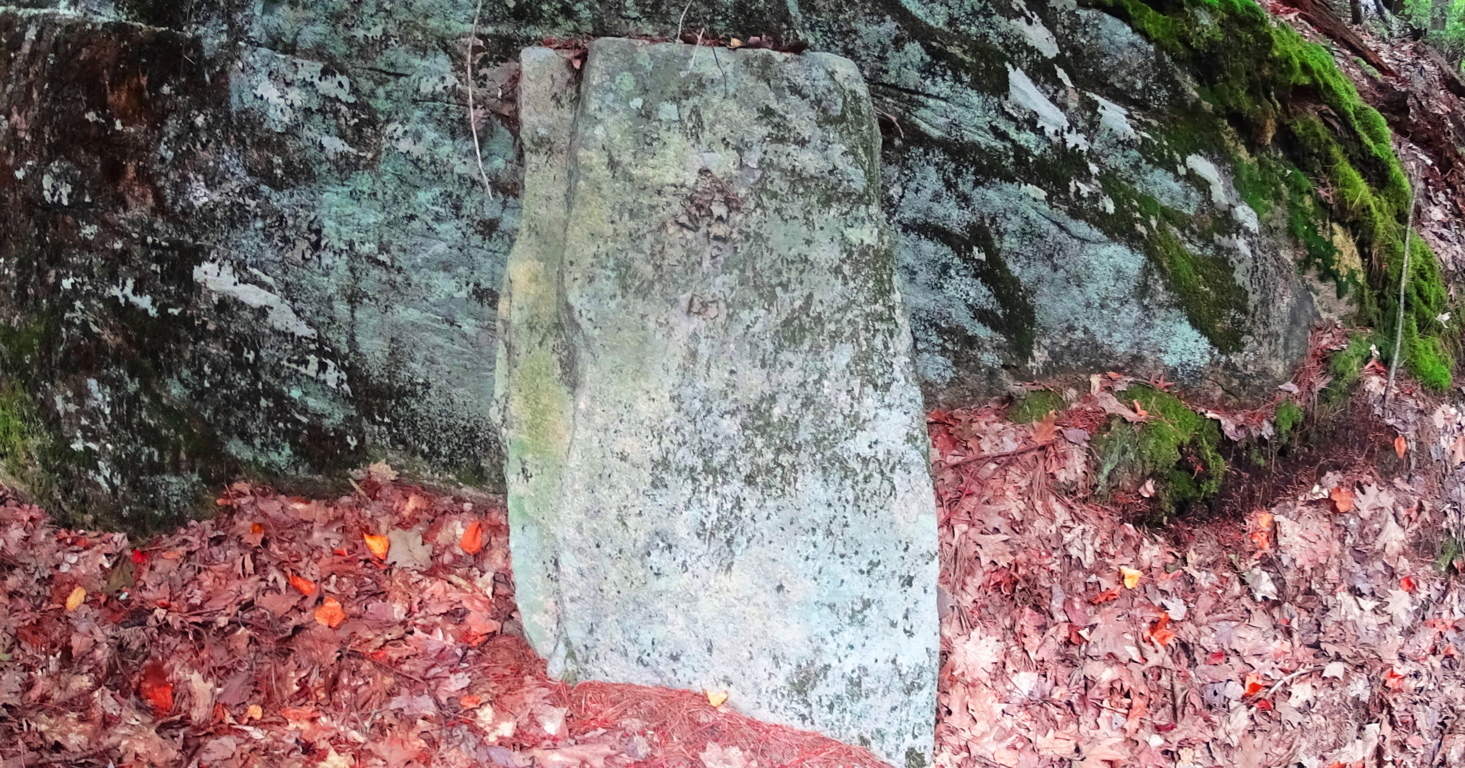
A similar stone in the historically megalithic town of Upton stands, just like this stone in Rattlesnake’, along a large stone-lining near the ancient Upton Chamber (below)…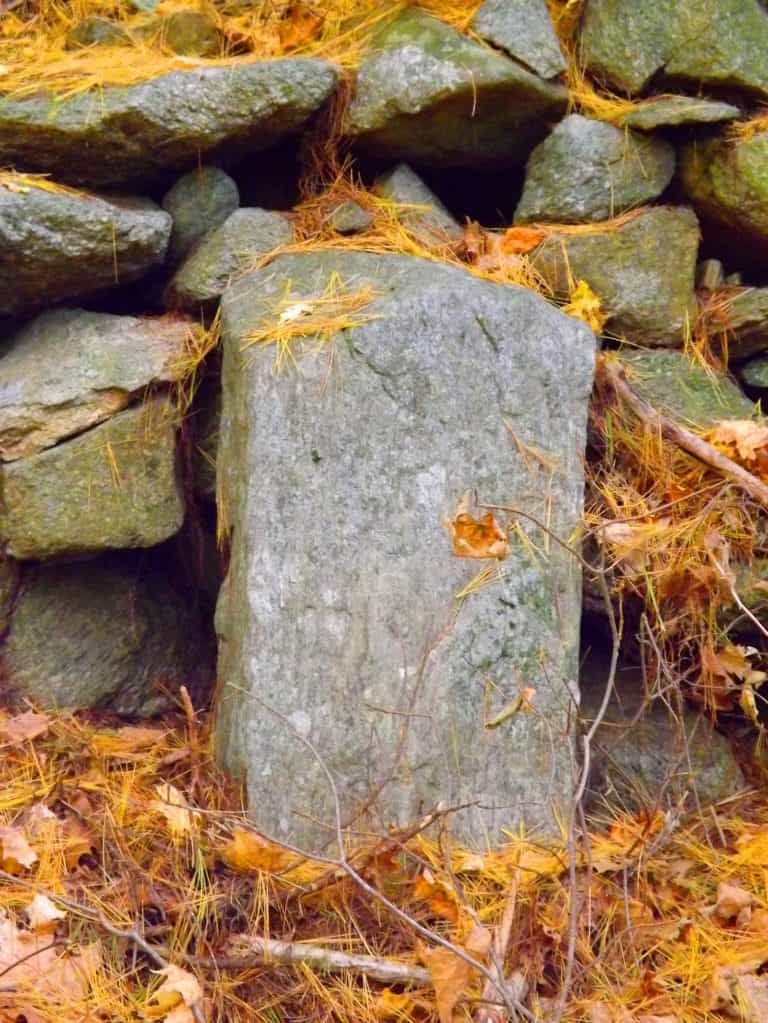
Keep in mind that these are not “small” stones, they are cut and crafted granite pieces that go as far into the ground as they are above; and they are perfectly squared. They are clearly a cultural marker of some kind created in antiquity. You will continue to follow the trail west until it turns left again, towards the western edge of the Farley Ledges, where the best lookout of the trail is found after about another 1/4 mile.  The woods on this western edge of the trail are massive shelves and boulders overgrown with classic New England Fauna (image below)…
The woods on this western edge of the trail are massive shelves and boulders overgrown with classic New England Fauna (image below)…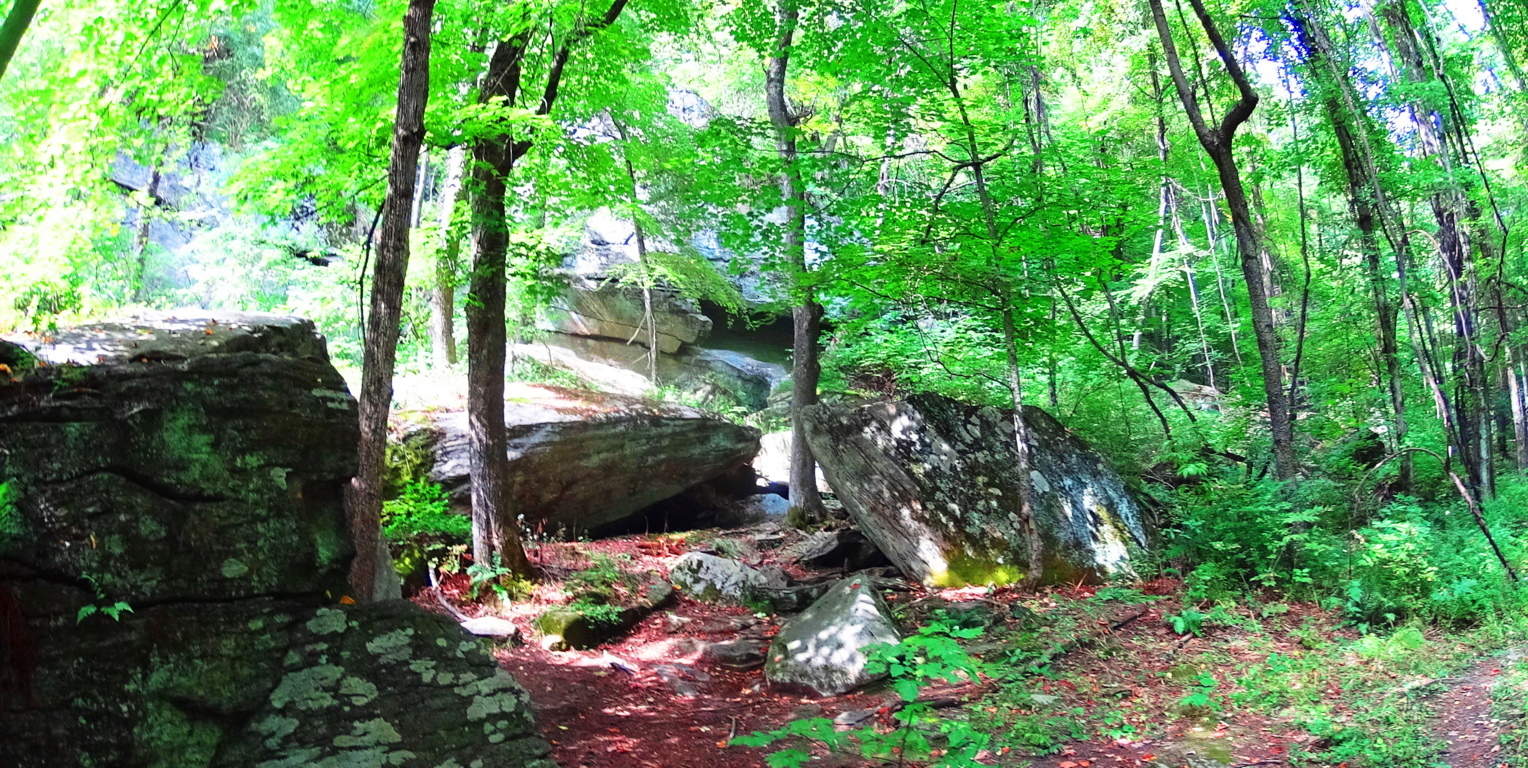 At the western extreme of the trail, over looking Route 2A, is the southerly view of the heart of Massachusetts (image below)…
At the western extreme of the trail, over looking Route 2A, is the southerly view of the heart of Massachusetts (image below)… 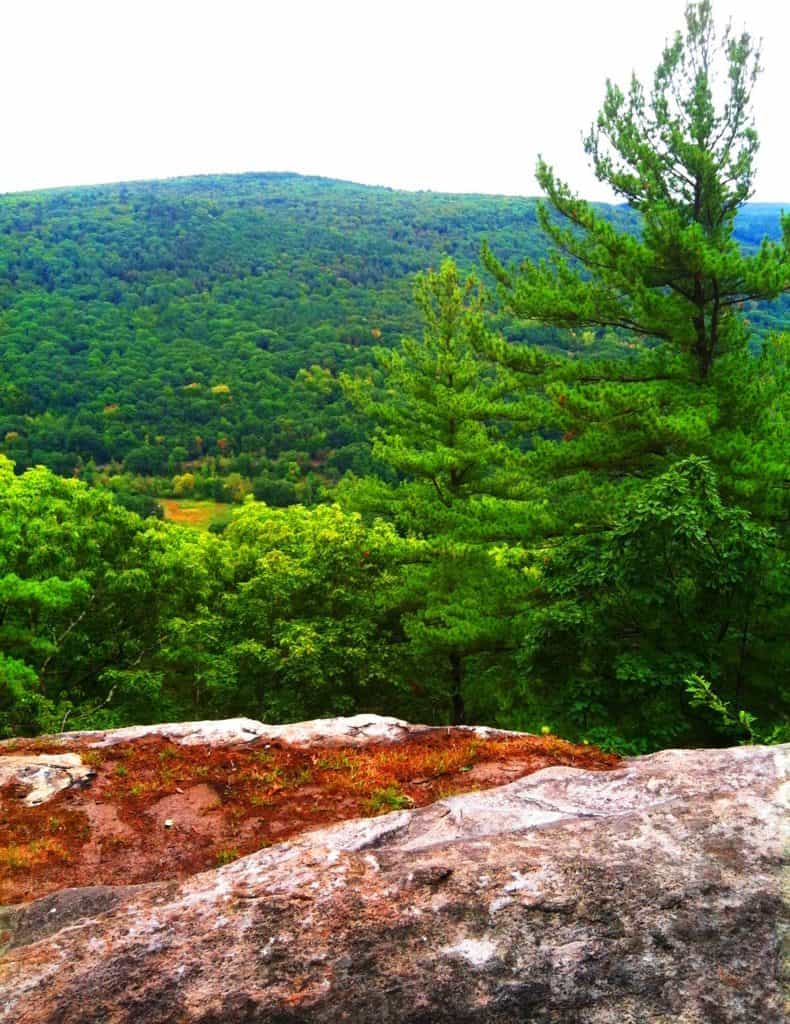
After taking in this view, the last portion of the loop descends back along Farley Ledge to the east. There are miniature canyons below, and gigantic granite walls slicing through the hills (image below)…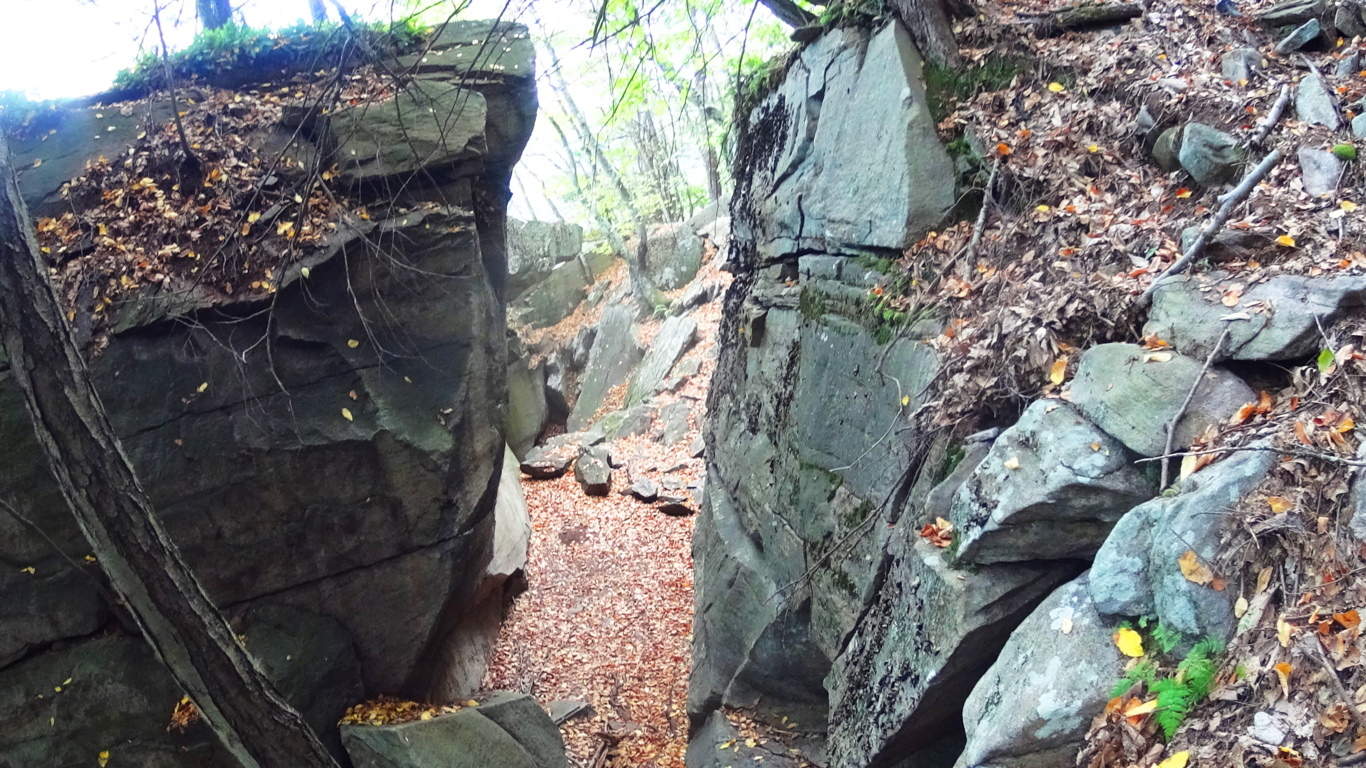 You will eventually come to a lower crossing of the stream at the eastern edge of the trail, then head back down to the megaliths below at Farley Ledge.
You will eventually come to a lower crossing of the stream at the eastern edge of the trail, then head back down to the megaliths below at Farley Ledge.
Rattlesnake Mountain is yet another example of classic New England hiking that combines practically magical megalithic statements in the forest and mountains with a pristine hiking experience. Time after time, forests and mountains of Celtic and New England places reveal a related megalithic mystery yet to be acknowledged by so many academics. Rattlesnake is clearly one of these sacred places, and it will grant the hiker a vision of something miraculous, something which is calling out to us from a culture that left its mark in a way that will never fade. You can touch these signature stones yourself, see the size and scope of them, walk the trails, and simply wander right into the hallowed wonder of it all.
Heath Altar Stones
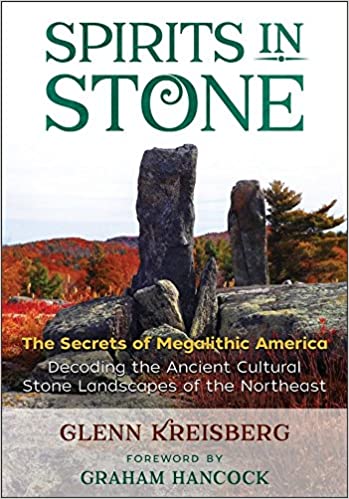 Loc
Loc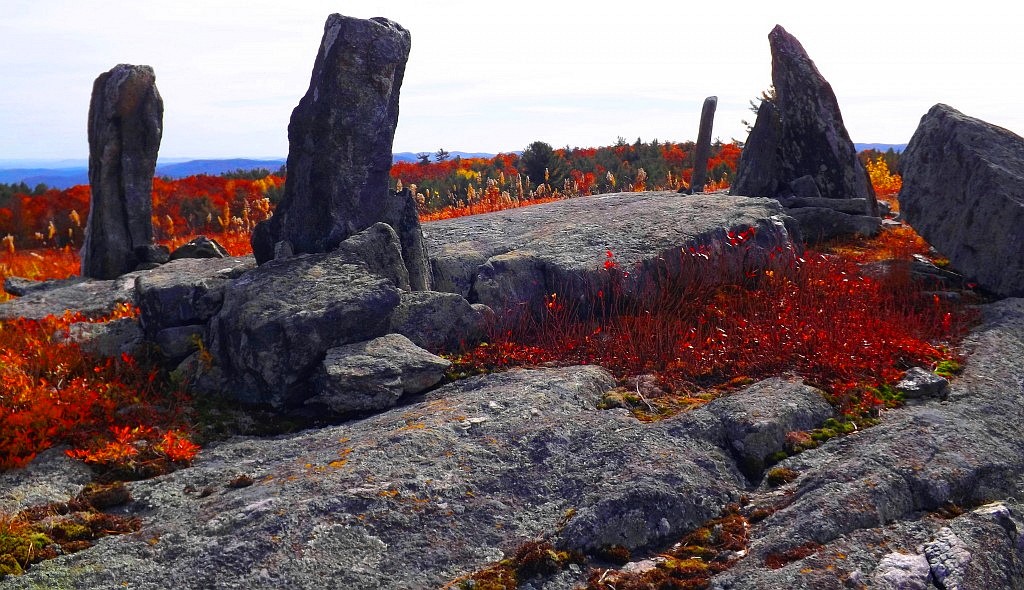 ation: Town of Heath, Massachusetts/USA
ation: Town of Heath, Massachusetts/USA
Note: The Heath Altar is an incredible Megalithic Period statement, set squarely at the top of a quartz riddled hill, in the town of Heath, in Western Massachusetts. When I took the photograph for the cover of Glenn Kreisberg’s interesting book about ‘Megalithic America’, I did so on my own, without asking permission. I did this because I believe that the Heath Altar is a National Heritage Site, not a rock-pile to be guarded by “KEEP OUT OR GET SHOT’ signs of some old and bitter son-of-a-bitch, in his rocking chair. If any researchers have a problem with this action that I took, get in touch with me via: jpv@stonestrider.com, and we can talk, face to face. Otherwise, grow some balls, and do the work yourself. And check out the book, its an important work for people interested in this megalithic thing’;)
Sad Note About America: America has become a scary place, filled with control freak legislators and rule makers, and Facebook-tough-guys, with a spineless, utterly malleable population of cowards, and forgetful bots, that literally no longer think for themselves, or challenge any authority or narratives. These researchers now talk about me on their corny, stuffy, presumptive websites, and on Facebook, like schoolgirls. Well guess what, local Massachusetts researchers who have never taken a single chance for their research, or ever climbed a single mountain, or spoken with a single farmer in the fields; I’m not waiting around for your dueschbag approval, or anyone else’s, for that matter. I want to find sacred places and see them, up close, for myself. I want to collect evidence, up close. I took pictures inside New Grange, even though the signs said not to; and took pictures at The Heath Altar, because thats exactly why these monuments were left behind, to be studied up close, by us. I don’t have time for the fake researchers, and the bureaucracies of the World ruining everything, to approve. And guess what, I got the photograph for the cover of this book, and inside New Grange, because I had heart. Deal with it.
Altars: There are laymen researchers here in New England who struggle with the identity of the makers of this Altar. The ashlar-cut boulders go as deep into the ground, as they do protrude. These boulders are lock-set, like a key in a keyhole, and are too heavy to budge. These stones are set around a square flatted slab of granite, that looks much like a table for performing any amount of varies actions. Local researchers pushing the narrative that Native American tribes built this place, have completely disregarded mass amounts of evidence from similar constructs in Megalithic Ireland, England, Wales, Scotland, France, Italy, and Greece. The Heath Altar is a Neolithic Period construct, created by a Culture that embraced working with massive stones, all throughout New England. The similarity of The Heath Altar, to European Altars, is beyond argument. Below is an image if the Laraghirril Altar Stones, in Ireland. The similarity is un deniable, and has nothing to do with “Native Americans”. 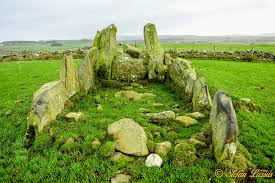 The Celtic Native Tribes did not build the Megalithic Altars in Europe, just as the Native American Tribes did not build the megaliths in America. There was an earlier Culture, with specific memes, logos, and cultural morays, that can be related through directly connecting the blatant symbolism, and coding, of the construct of the megaliths. The abundance of evidence is what this website is about. Look at the most recent discoveries and recent stories; the evidence is there. Equilateral triangles cut not granite, orientations of stones, stone-linings running straight up mountain sides, all of megalithic size, and scale, with quartz harvests in the stonework, along with celestial orientations; all present in the megalithic works. The megaliths show scientific/mathematical evidence of being present long before Celtic or Abenaki/Iroquois Tribes existed in regions where they stand. Just deal with it. The beautiful Native American tribes in the Northeast United States were seasonally nomadic, minimal in their possessions, averse to ego-driven labor and taking constant orders, and humbly simple in their technology and tools. Native Americans do not claim to have built this Altar, and they shouldn’t. The Heath Altar was built by the Megalithic Culture, the first culture on Earth.
The Celtic Native Tribes did not build the Megalithic Altars in Europe, just as the Native American Tribes did not build the megaliths in America. There was an earlier Culture, with specific memes, logos, and cultural morays, that can be related through directly connecting the blatant symbolism, and coding, of the construct of the megaliths. The abundance of evidence is what this website is about. Look at the most recent discoveries and recent stories; the evidence is there. Equilateral triangles cut not granite, orientations of stones, stone-linings running straight up mountain sides, all of megalithic size, and scale, with quartz harvests in the stonework, along with celestial orientations; all present in the megalithic works. The megaliths show scientific/mathematical evidence of being present long before Celtic or Abenaki/Iroquois Tribes existed in regions where they stand. Just deal with it. The beautiful Native American tribes in the Northeast United States were seasonally nomadic, minimal in their possessions, averse to ego-driven labor and taking constant orders, and humbly simple in their technology and tools. Native Americans do not claim to have built this Altar, and they shouldn’t. The Heath Altar was built by the Megalithic Culture, the first culture on Earth. 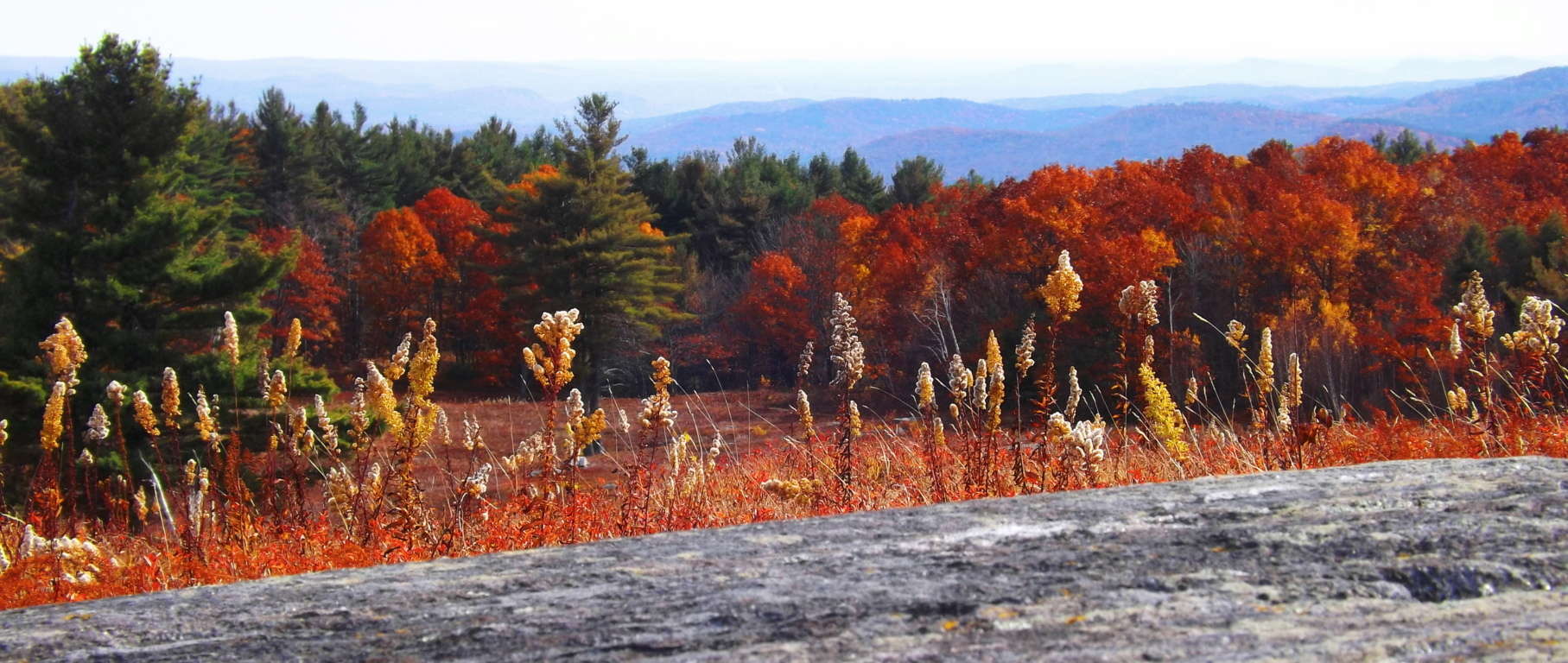 The Town of Heath: The rustic countryside on the boarder of Vermont and central Massachusetts, on the northeastern coast of the U.S, is as picturesque as any scene. Small mountains, rocky hills, Pines, Birches, and Hemlocks, all dot the landscape. The four classic seasons flux distinctly in this part of the world, with a most captivating Autumn.
The Town of Heath: The rustic countryside on the boarder of Vermont and central Massachusetts, on the northeastern coast of the U.S, is as picturesque as any scene. Small mountains, rocky hills, Pines, Birches, and Hemlocks, all dot the landscape. The four classic seasons flux distinctly in this part of the world, with a most captivating Autumn.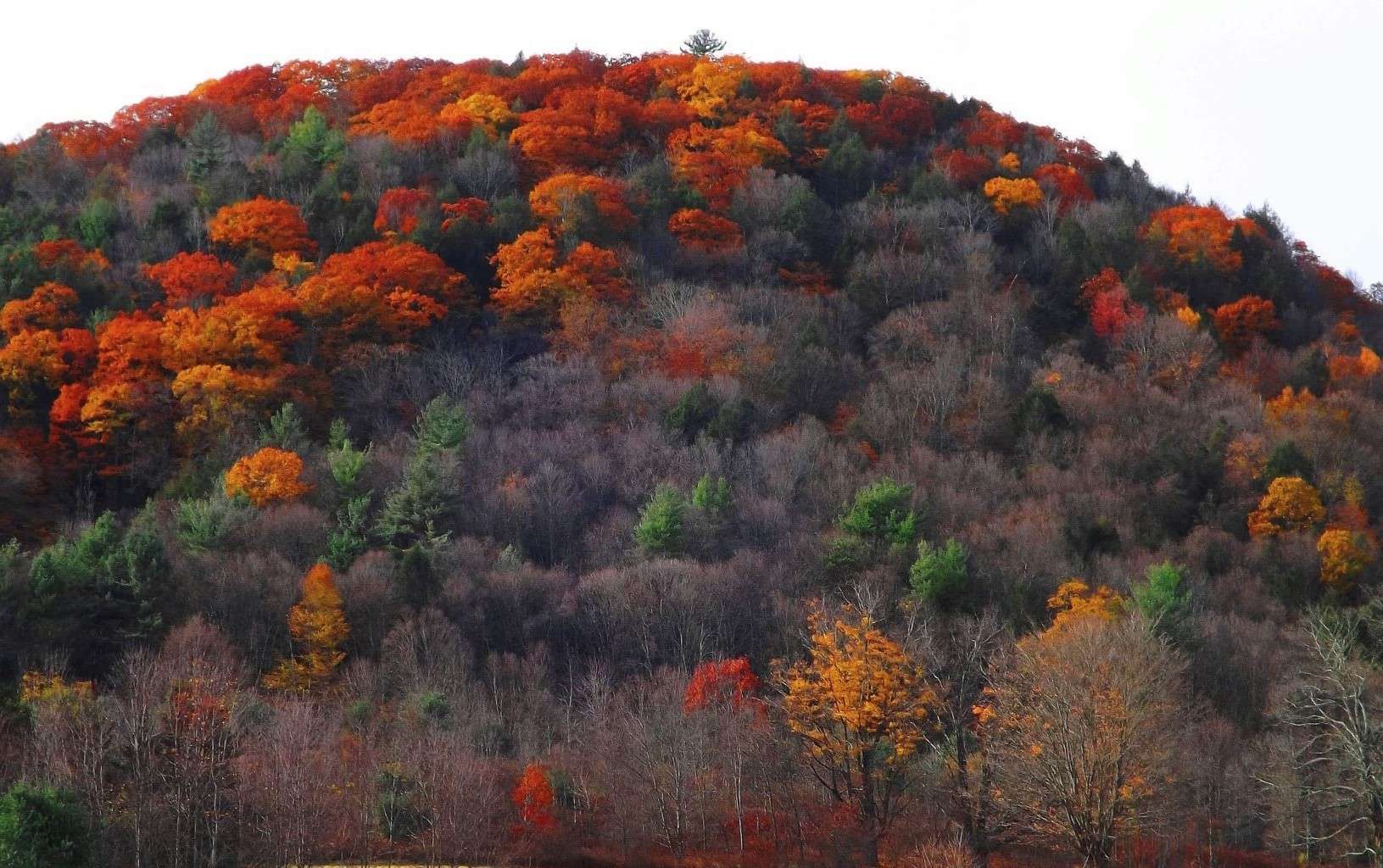 The Green Mountains of Vermont are 15 miles northwest of Heath, along with state preserved trails at Mount Watatic, Monument Mountain, Savoy Falls, and Bears Den, are all within an hour of here (and featured on this site). New England’s first layer is the Megalithic Stones and its Culture. The second layer is the Native American movements, and seasonal migrations, with minimal effect on the landscape. The third layer became the Colonial invasion, and the fourth, and most dominant layer, is of course the modern sub-urban domination of towns and small cities, uprooting and confusing the true history of the landscape in so many regions. But there are still distinct signs and works of the megalithic Culture in the untouched areas, and it is like this in many parts of the world. Where there in modernization, we find megalithic stone works.
The Green Mountains of Vermont are 15 miles northwest of Heath, along with state preserved trails at Mount Watatic, Monument Mountain, Savoy Falls, and Bears Den, are all within an hour of here (and featured on this site). New England’s first layer is the Megalithic Stones and its Culture. The second layer is the Native American movements, and seasonal migrations, with minimal effect on the landscape. The third layer became the Colonial invasion, and the fourth, and most dominant layer, is of course the modern sub-urban domination of towns and small cities, uprooting and confusing the true history of the landscape in so many regions. But there are still distinct signs and works of the megalithic Culture in the untouched areas, and it is like this in many parts of the world. Where there in modernization, we find megalithic stone works. 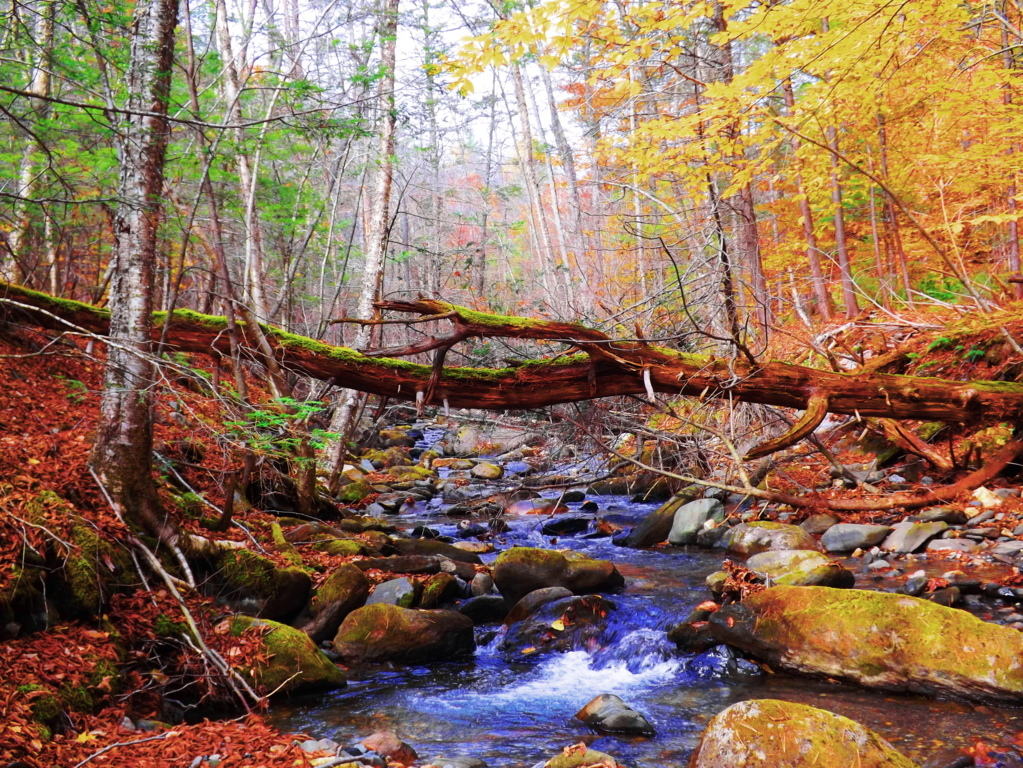 For example, along the streams approaching the area in Heath are megalithic scale irrigation walls that provide ‘pivots’ in the landscape for streams to flow by. This 12 foot high, and beautifully leveled, work of irrigation is only 4 miles from the Heath Altar, adding to the mystique of the overall area.
For example, along the streams approaching the area in Heath are megalithic scale irrigation walls that provide ‘pivots’ in the landscape for streams to flow by. This 12 foot high, and beautifully leveled, work of irrigation is only 4 miles from the Heath Altar, adding to the mystique of the overall area.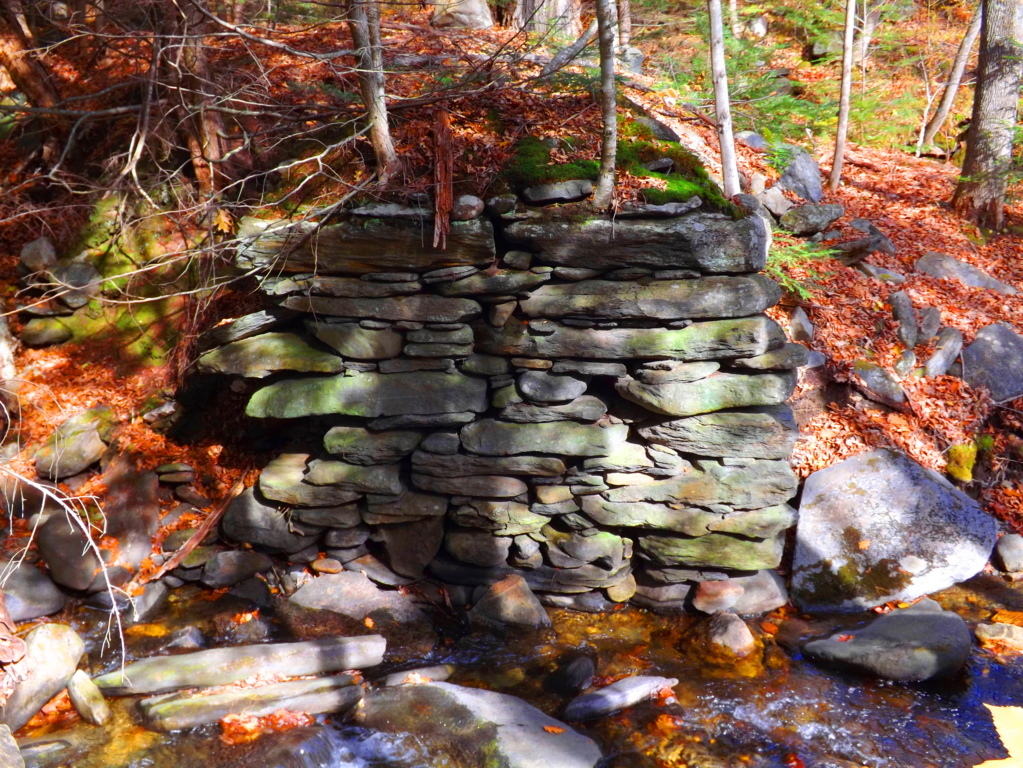 The dry rocky plateau on which the Heath Altar sits radiates hallowed vibrations. This is among the oldest cultural structures on earth. There is a loose symmetry to the scene, with a bed of flat granite at the highest point of the broad hill, guarded at each of it’s four corners by deeply incised, and notched, standing stones. The standing stones here are not flimsy, as depicted in most old articles. These are broad and intimidating megaliths, which can be seen here. (Image/Below) This is the photographic justice this site demands, capturing the grandeur of the overall area as well, not obscured images from old newspaper articles, or desperately zoomed photos from 100 yards away from fearful on-lookers. Everything about this place says Megalithic, not Colonial farmer’s “pet project”, which is what many writers and researchers would also have people attributing credit to. In the United States, the idea of colonials having possibly built these megaliths is often mentioned. It is infuriating, and totally irresponsible. Nothing about this area says ‘colonial’, or Native American, for that matter.
The dry rocky plateau on which the Heath Altar sits radiates hallowed vibrations. This is among the oldest cultural structures on earth. There is a loose symmetry to the scene, with a bed of flat granite at the highest point of the broad hill, guarded at each of it’s four corners by deeply incised, and notched, standing stones. The standing stones here are not flimsy, as depicted in most old articles. These are broad and intimidating megaliths, which can be seen here. (Image/Below) This is the photographic justice this site demands, capturing the grandeur of the overall area as well, not obscured images from old newspaper articles, or desperately zoomed photos from 100 yards away from fearful on-lookers. Everything about this place says Megalithic, not Colonial farmer’s “pet project”, which is what many writers and researchers would also have people attributing credit to. In the United States, the idea of colonials having possibly built these megaliths is often mentioned. It is infuriating, and totally irresponsible. Nothing about this area says ‘colonial’, or Native American, for that matter.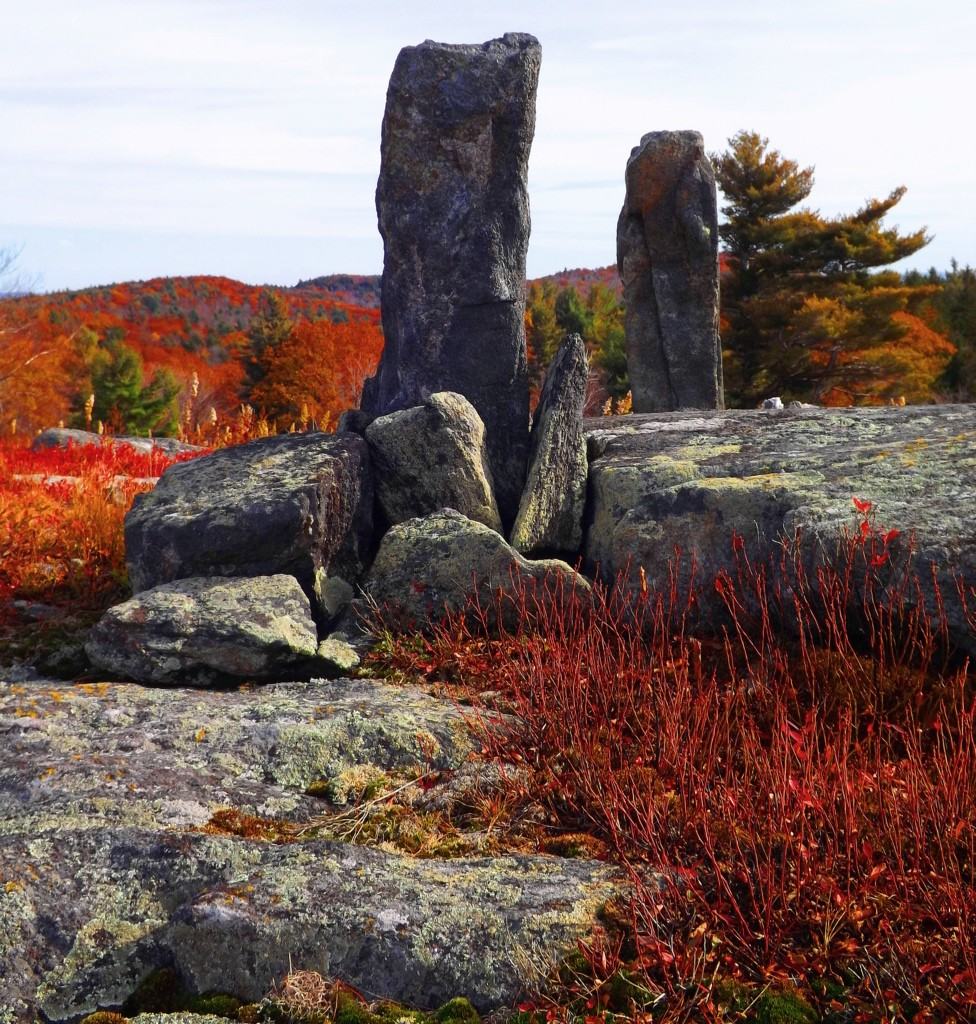 The standing stones are each about 6 feet in height, and a single foot in width. Just beyond the Altar is a fifth standing stone that serves as a kind of head-stone. The ‘stone table’ may have served to support a bonfire, or perhaps it was more of a literal ‘large table’, used for sacrificial rites, or skinning hunted game. Whatever happened at this spot, the builders of this place made it distinct, so it is clear that this was considered a sacred place.
The standing stones are each about 6 feet in height, and a single foot in width. Just beyond the Altar is a fifth standing stone that serves as a kind of head-stone. The ‘stone table’ may have served to support a bonfire, or perhaps it was more of a literal ‘large table’, used for sacrificial rites, or skinning hunted game. Whatever happened at this spot, the builders of this place made it distinct, so it is clear that this was considered a sacred place. Radiating away from the Altar are smaller standing stones.
Radiating away from the Altar are smaller standing stones.
Smaller Standing Stones near by: Here is look at a smaller white marble, 3 feet tall standing stone, almost 50 yards from the top of the hill. Stones like this may have served as a boundary, or warning stone, for others approaching the Alter. It is obvious that this particular stone was also chosen for its beauty.There is also a distinct possibility that these smaller stones are celestially oriented. 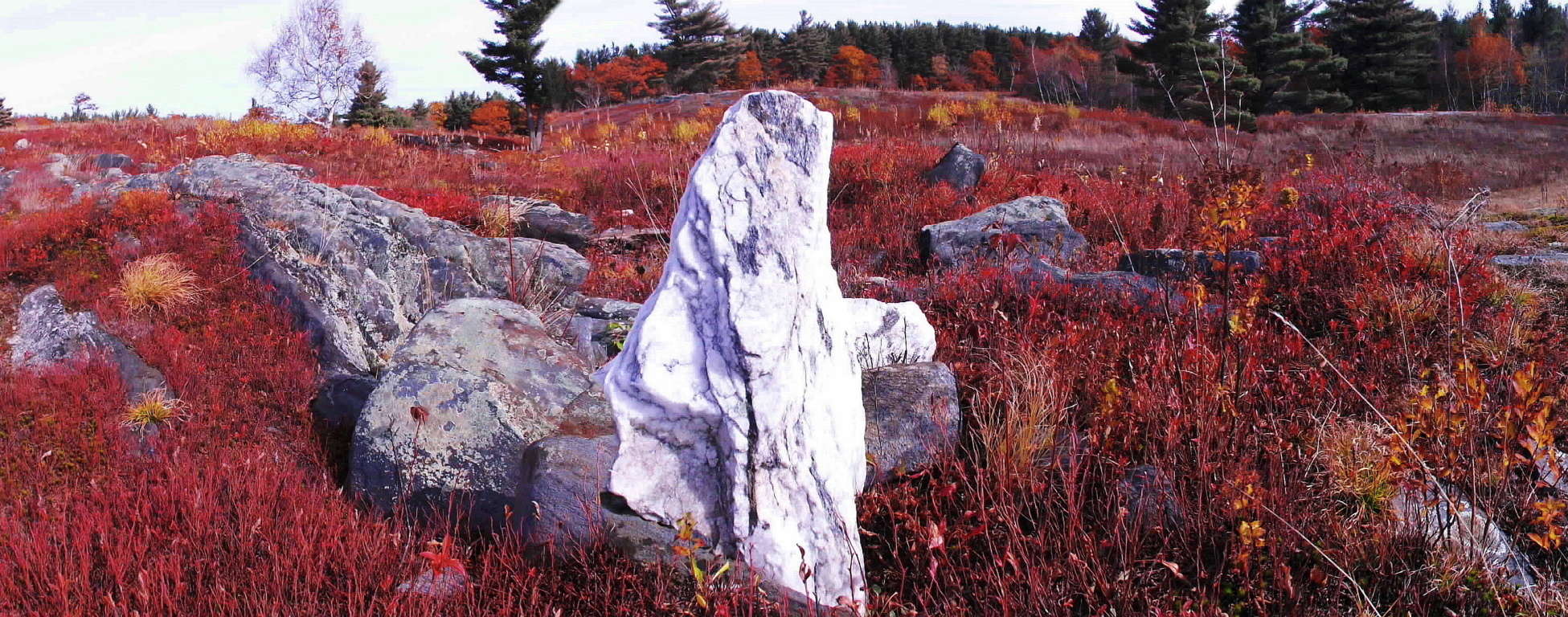 In another area away from the Altar site, possibly fixed to the northerly cardinal direction, sits another standing stone, deep in the ground, and somewhat tilted. This one looks to have been about 8 feet long, although only about 3 feet is above ground, with a darker colored rock face pointing towards Vermont.
In another area away from the Altar site, possibly fixed to the northerly cardinal direction, sits another standing stone, deep in the ground, and somewhat tilted. This one looks to have been about 8 feet long, although only about 3 feet is above ground, with a darker colored rock face pointing towards Vermont. Facing cardinal South is another amazing standing stone that has a 45 degree angular cut, with an ‘arrowhead top’, standing roughly 3 feet high, and 6 inches thick. (Second Image/Below/White Color) This particular type of stone can be found in other parts of New England as well, supporting the idea that it is a singular megalithic culture that occupied this natural space. Pictured below is a massive 45 degree angle New England standing stone with the exact same dimensions as the smaller Heath standing stone. The area that the smaller Heath standing stone is directs our attention to is gorgeous.
Facing cardinal South is another amazing standing stone that has a 45 degree angular cut, with an ‘arrowhead top’, standing roughly 3 feet high, and 6 inches thick. (Second Image/Below/White Color) This particular type of stone can be found in other parts of New England as well, supporting the idea that it is a singular megalithic culture that occupied this natural space. Pictured below is a massive 45 degree angle New England standing stone with the exact same dimensions as the smaller Heath standing stone. The area that the smaller Heath standing stone is directs our attention to is gorgeous.  The trees here are stunning at this time of year. Notice also that even the flat granite stones along the ground seem to have been leveled and cut on their sides. The amount of cultural stonework happening here gives the area a type of energy, perhaps like at the Hill of Tara in Ireland, or at the Avebury stone circle in England. The feeling is just overwhelming that someone, a very long time ago, loved this place enough to mark it out in amazingly playful way, with massive stones, that would remain forever.
The trees here are stunning at this time of year. Notice also that even the flat granite stones along the ground seem to have been leveled and cut on their sides. The amount of cultural stonework happening here gives the area a type of energy, perhaps like at the Hill of Tara in Ireland, or at the Avebury stone circle in England. The feeling is just overwhelming that someone, a very long time ago, loved this place enough to mark it out in amazingly playful way, with massive stones, that would remain forever. 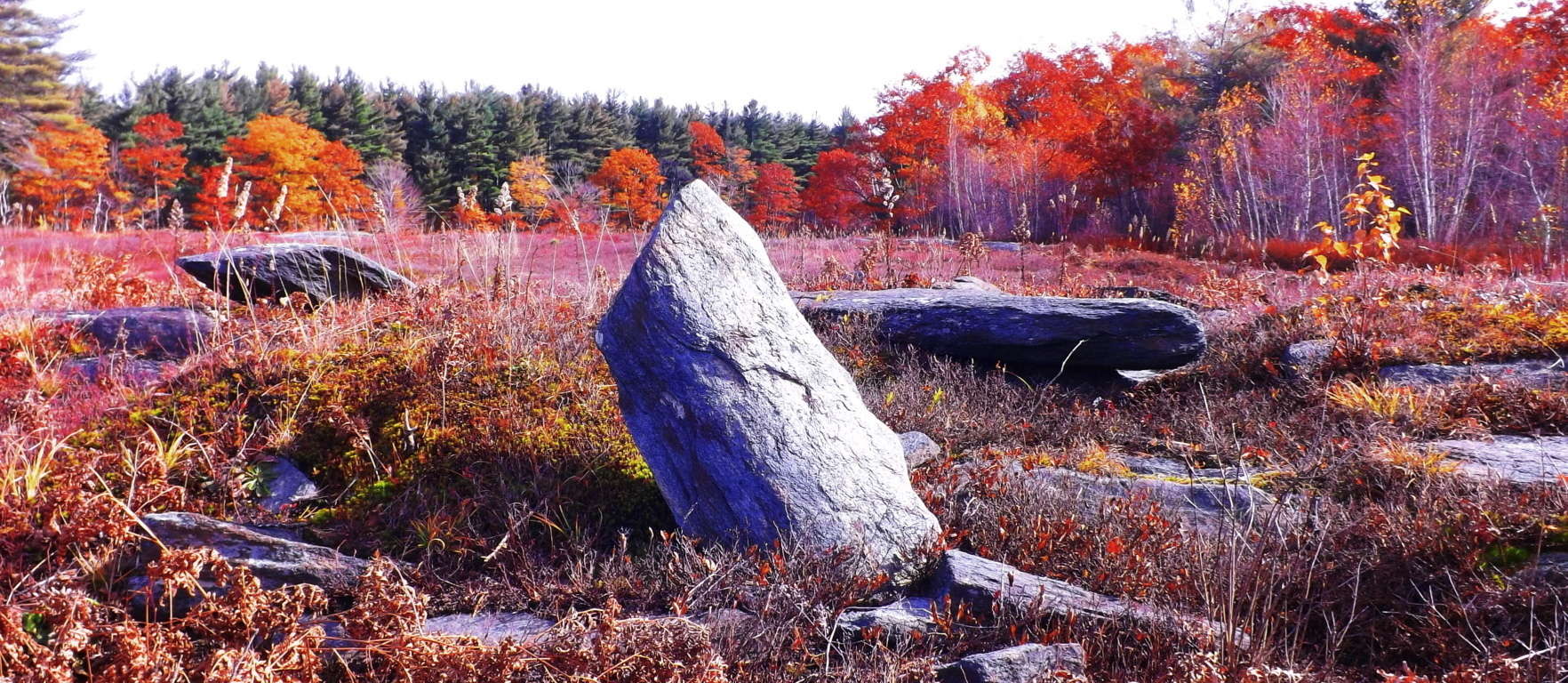 Quartz stones and classic stone-linings: The energy-storing and transferring properties of quartz are well known. Also on this sacred rocky plateau sits one of the most abundant quartz faces in all of New England. The surreal vision it creates against the dry red brush is striking, looking almost like snow. This a clear quartz concentration or harvest, which is very similar to many megalithic areas in Europe.
Quartz stones and classic stone-linings: The energy-storing and transferring properties of quartz are well known. Also on this sacred rocky plateau sits one of the most abundant quartz faces in all of New England. The surreal vision it creates against the dry red brush is striking, looking almost like snow. This a clear quartz concentration or harvest, which is very similar to many megalithic areas in Europe.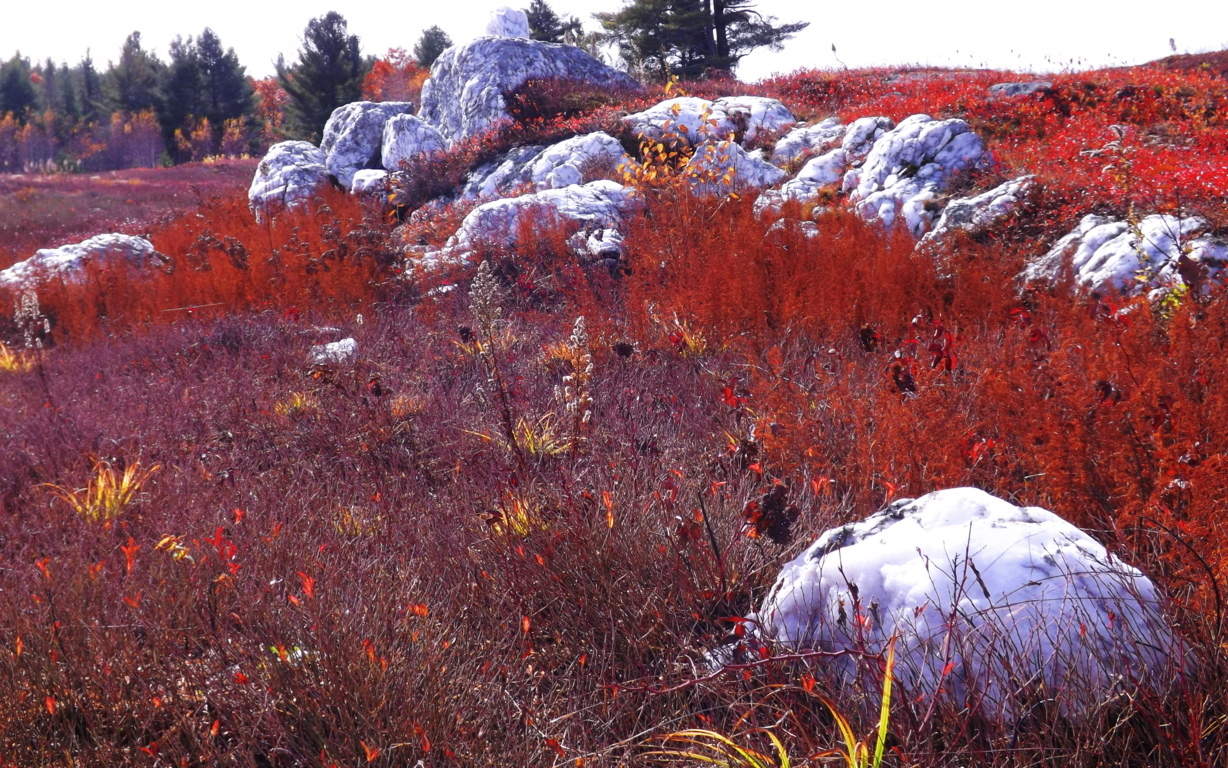 If quartz boulders are purposely scattered throughout the area, it would make sense that this place is a designed kind of ‘energy center’,with quartz absorbing energy from the Sun and connecting stones. This piece below looks to weigh at least half a ton, set proudly above a cut granite slab, near the Heath Altar.
If quartz boulders are purposely scattered throughout the area, it would make sense that this place is a designed kind of ‘energy center’,with quartz absorbing energy from the Sun and connecting stones. This piece below looks to weigh at least half a ton, set proudly above a cut granite slab, near the Heath Altar. 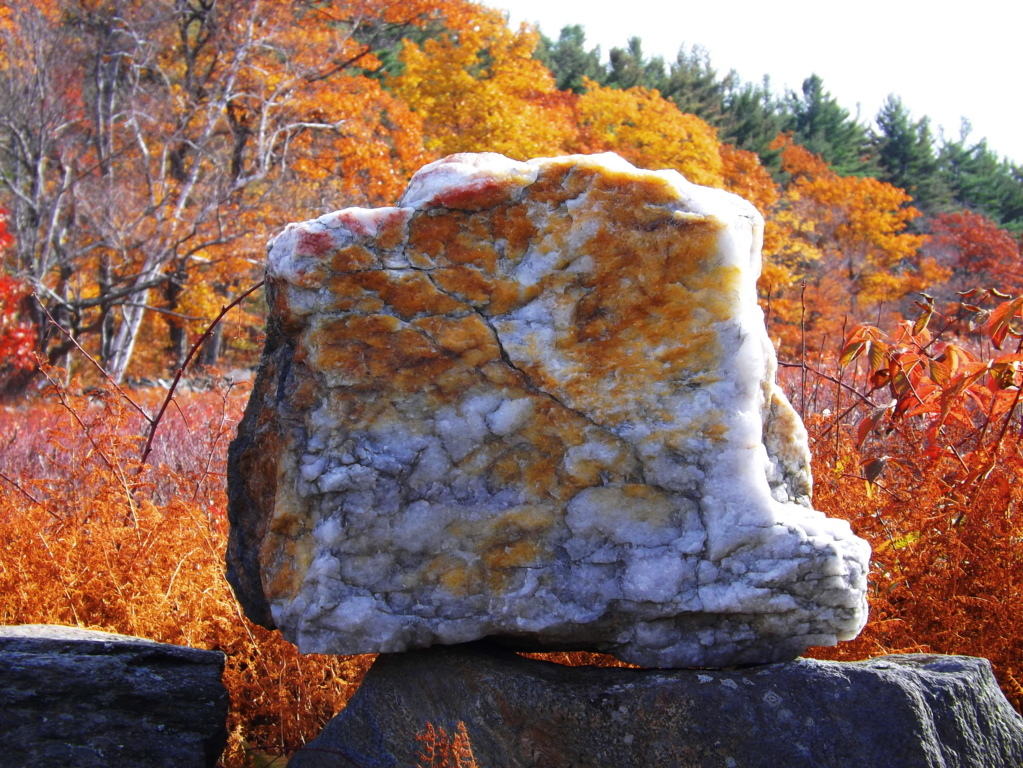 It’s as if megalithic anthropological sites are revealing a knowledge of the properties of stones. If this is true, then this entire area is a type of engineered energy center. Further to the north are classic stone-linings running through the area. These can be found in Cavan Burren National Park in a very similar style, connecting peaks, from hill top to hill top. There are enough of these linings in New England to circle the earth six times, with probably just as many in Ireland and England. This is a monument larger than the great pyramid, simply laid out in a different format. Native Americans mention nothing of building stone-linings enough times to circle the Earth 6 times. Not a word. Someone else did this colossal work.
It’s as if megalithic anthropological sites are revealing a knowledge of the properties of stones. If this is true, then this entire area is a type of engineered energy center. Further to the north are classic stone-linings running through the area. These can be found in Cavan Burren National Park in a very similar style, connecting peaks, from hill top to hill top. There are enough of these linings in New England to circle the earth six times, with probably just as many in Ireland and England. This is a monument larger than the great pyramid, simply laid out in a different format. Native Americans mention nothing of building stone-linings enough times to circle the Earth 6 times. Not a word. Someone else did this colossal work. 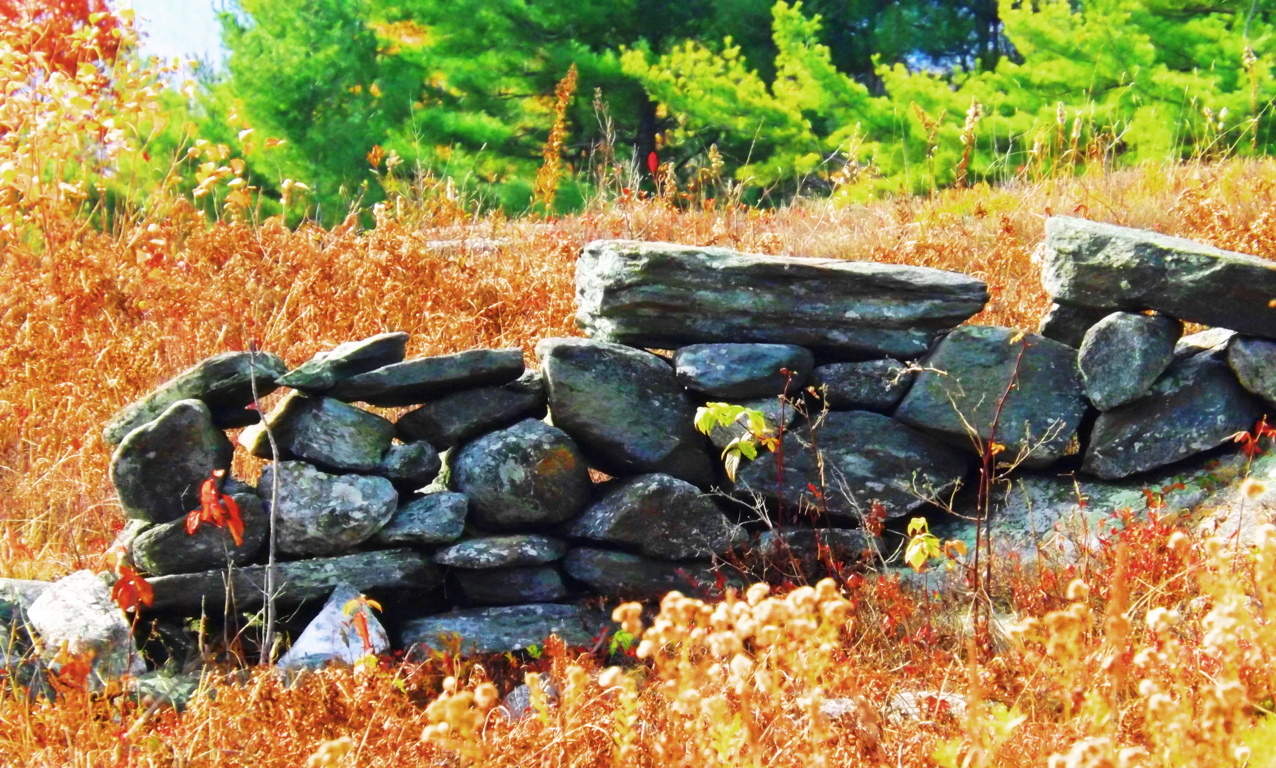 Megalithic New England: There are beautiful subtleties to understand about this place. The elevation of the rocky hill; the distance to the tree’s below, the Altar in the high clearing; as well as the fauna of the tall reeds, mingling with the stones, looking like so many other megalithic zones in Europe. Take a look at the overall similarity between this hill in Heath, and the hill top above Kinnitty Forest in Ireland, where stone-linings and irrigation walls exist in the landscape as well. (Images/Below) It’s as if the landscapes are paternal twins, with exactly similar scaling, with just the different colors to distinguish them. The elevations and patterns of sacred Neolithic places are similar because it was a similar Culture that built them.
Megalithic New England: There are beautiful subtleties to understand about this place. The elevation of the rocky hill; the distance to the tree’s below, the Altar in the high clearing; as well as the fauna of the tall reeds, mingling with the stones, looking like so many other megalithic zones in Europe. Take a look at the overall similarity between this hill in Heath, and the hill top above Kinnitty Forest in Ireland, where stone-linings and irrigation walls exist in the landscape as well. (Images/Below) It’s as if the landscapes are paternal twins, with exactly similar scaling, with just the different colors to distinguish them. The elevations and patterns of sacred Neolithic places are similar because it was a similar Culture that built them. 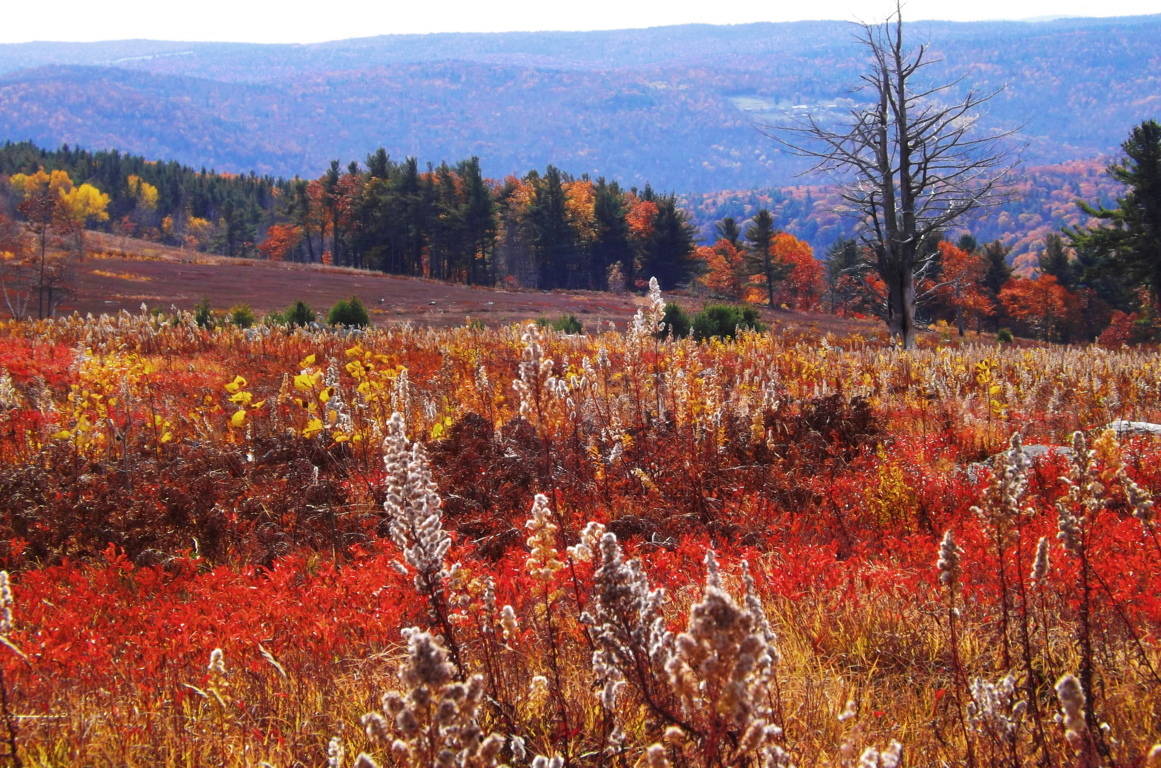 Heath Hilltop (Image/Above)
Heath Hilltop (Image/Above)
 Here is the hilltop at Kinnitty (Image/Above)
Here is the hilltop at Kinnitty (Image/Above)
Summary: Look at all these features at Heath. It’s overwhelming, and obviously a Megalithic Cultural center. Once upon a time these advantageous vistas were chosen by a Megalithic culture. They were absolutely of the same mind, as to what areas were worth inhabiting. The similarity of these chosen areas, the elevations, the circumference of the rocky clearings, the distance to the running streams, and the types of stone being utilized as megalithic, all reveal compelling evidence towards a single ancient Culture, present both in the American Northeast, and the ancient European hills. The Heath Altar Stones are a direct anthropological connection to the Megalithic world, and yet this information is considered ‘alternative‘. It’s absurd when seen first hand, what the academics are clearly ignoring. There is an energy and beauty in central Massachusetts that is on-par with any of the preserved pastoral natural spaces of the European Megalithic world. All it takes is an exploratory hike in the forests and rocky hills of Heath, and you will see, and feel, it for yourself. And that is the more important point, to see it, and feel it for yourself. Don’t let anyone tell you what something is before analyzing it for yourself, or it won’t be long before not one of your ideas will actually be your own. When you find a sacred place, it reveals the sacred potential in you. Go for it.
Tully Lake/Forest of Neolithic Engineering
Note: Tully Lake Trail is nothing less than a kingdom of cut stones enveloped by gorgeous old growth forest in the heart of New England. The main trail loops down along the lake for about two miles, and then back into the elevated forest for another five. It is a challenging hike in winter, but enchanting. As you begin to progress into the glades of tall pines, birch, and maple, it becomes impossible to ignore the crafted megaliths lining the hillsides. It becomes abundantly clear that whoever engineered these incredible stones wanted them to be noticed. It is a venerable masonic work area, with standing stones, cut boulders, stone linings, and ancient stone dwellings. Furthermore, the stonework is not arbitrarily placed, but is clearly set in a specific manner, although beneath a blanket of snow it is difficult to decipher on a blustery December day. The clarity of the markings on these stones is astonishing. Similar styles of measurement for the cutting of megaliths exist at Mount Bearnagh in the Mourne Range of Ireland, and also most notably in the Lynn Woods further east of here in Massachusetts. Observing the scale of what are clearly measurement markings for cutting, (which I must add is certainly not inches, but some other grand standard) allows us to consider what the craftsman of the stones considered to be ‘scale’.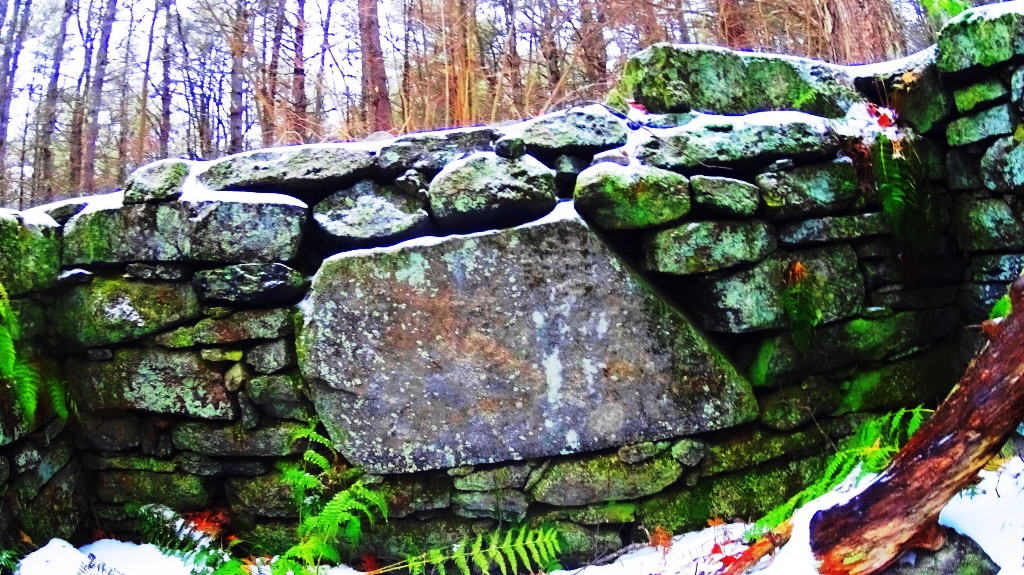 And that scale is MASSIVE. The stones also reveal incredibly complicated curvatures, extremely hard to create in large granite pieces.
And that scale is MASSIVE. The stones also reveal incredibly complicated curvatures, extremely hard to create in large granite pieces. The entire forest is inundated with stone statements that cry out for observation. Consistent with other old-growth trails all over the world, this forest contains the remnants of what I believe is the one time home of the craftsman of this area. Sitting roughly four miles into the loop of the main trail, unlabelled in any way, to the right of the pathway while heading back towards the entrance, I saw an incredible stone foundation of what was once clearly someones home. This site featured a beautifully dry-laid and grand cut-stone looking to weigh at least 2 tons, embedded perfectly into the foundation. The amount of care and effort that went into placing just this one megalithic center-piece must have been challenging. With sites like this, a trail becomes a priceless anthropological zone on the level of Tollymore Forest in Ireland, and Monument Mountain in the southern Berkshires of Massachusetts.
The entire forest is inundated with stone statements that cry out for observation. Consistent with other old-growth trails all over the world, this forest contains the remnants of what I believe is the one time home of the craftsman of this area. Sitting roughly four miles into the loop of the main trail, unlabelled in any way, to the right of the pathway while heading back towards the entrance, I saw an incredible stone foundation of what was once clearly someones home. This site featured a beautifully dry-laid and grand cut-stone looking to weigh at least 2 tons, embedded perfectly into the foundation. The amount of care and effort that went into placing just this one megalithic center-piece must have been challenging. With sites like this, a trail becomes a priceless anthropological zone on the level of Tollymore Forest in Ireland, and Monument Mountain in the southern Berkshires of Massachusetts.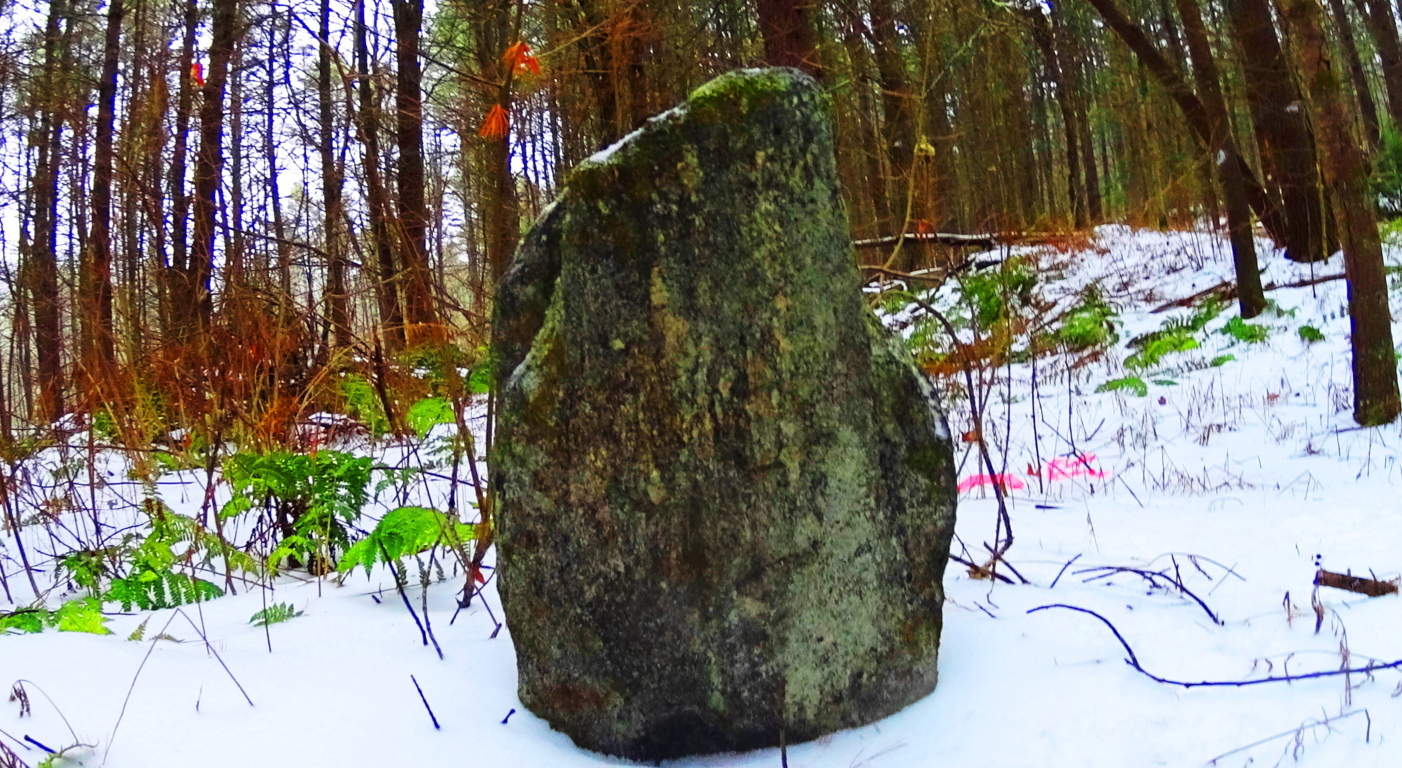 To find an ancient dwelling, or one definitive standing stone in a single New England forest is rare, but to find several is truly exhilarating. Further along the trail there is a stone connected to a stone-lining (‘wall’) looking very much like a Celtic ‘directional stone’, almost identical to types I have seen in England.
To find an ancient dwelling, or one definitive standing stone in a single New England forest is rare, but to find several is truly exhilarating. Further along the trail there is a stone connected to a stone-lining (‘wall’) looking very much like a Celtic ‘directional stone’, almost identical to types I have seen in England.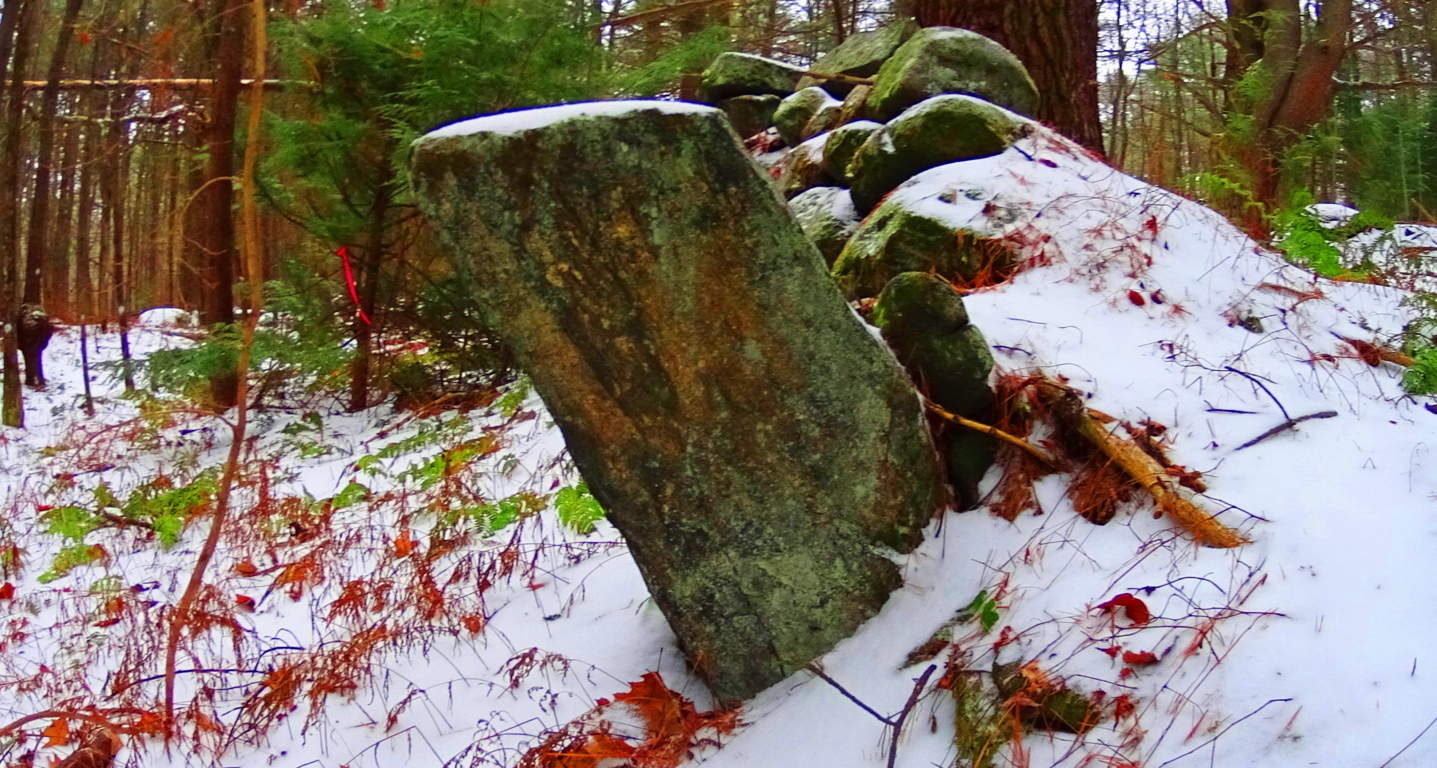 Celtic areas have preserved these stones and properly noted them as important anthropological statements from a culture perhaps 6000 years in the past, but New England has failed to do so here. Ironically, this somehow makes New England’s ancient sites feel a bit more pristine than even Celtic areas that are well known, because the stones have not been touched, or even visited by anyone knowingly seeking the works of a neolithic culture. When considering that almost every massive boulder in the forest contains some form of crafting, whether it be boulders split in half, or simply marked by incisions of some type, the amount of energy that would have been put into this effort is astounding, and so worth noting. And all the time, behind fixture after fixture of colossal craftsmanship, is mile upon mile of zig-zagging stone linings sliding through the trees.
Celtic areas have preserved these stones and properly noted them as important anthropological statements from a culture perhaps 6000 years in the past, but New England has failed to do so here. Ironically, this somehow makes New England’s ancient sites feel a bit more pristine than even Celtic areas that are well known, because the stones have not been touched, or even visited by anyone knowingly seeking the works of a neolithic culture. When considering that almost every massive boulder in the forest contains some form of crafting, whether it be boulders split in half, or simply marked by incisions of some type, the amount of energy that would have been put into this effort is astounding, and so worth noting. And all the time, behind fixture after fixture of colossal craftsmanship, is mile upon mile of zig-zagging stone linings sliding through the trees.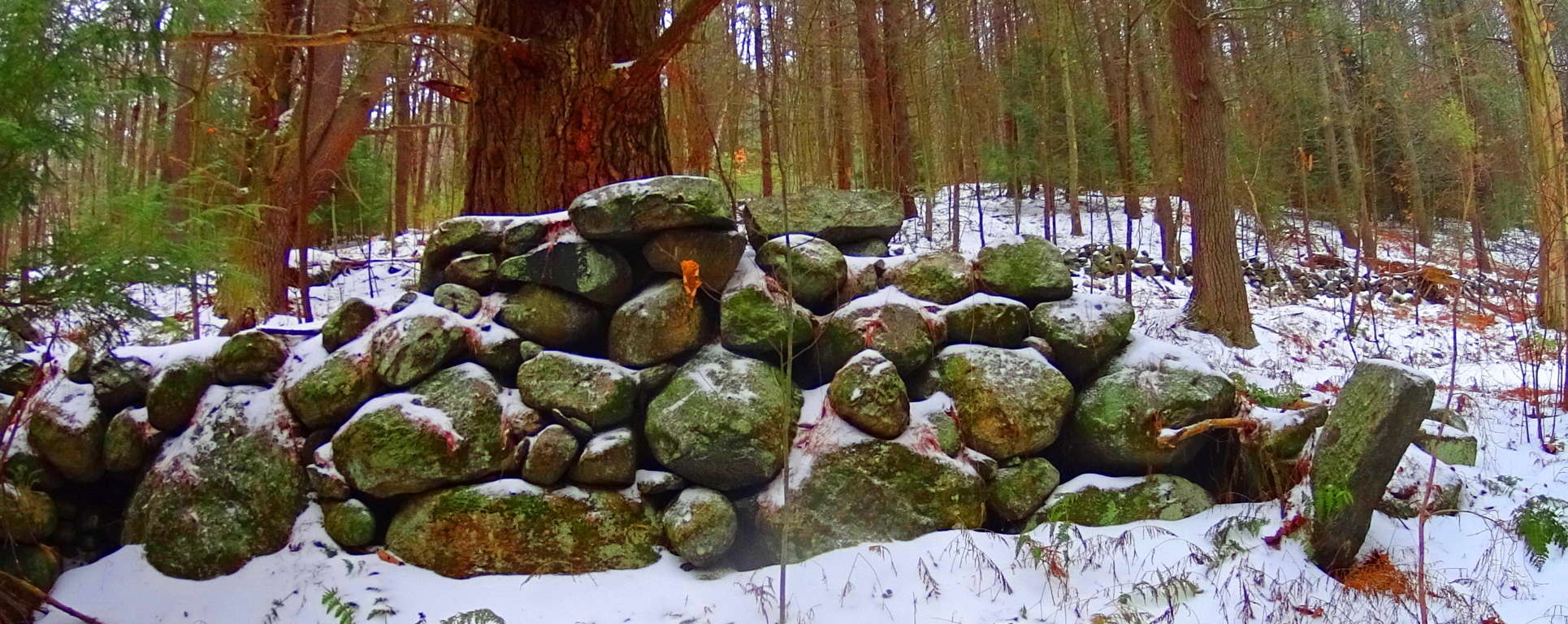 Close consideration of these works reveal that these efforts are not mere random ‘holes’ in the rock, but linearly lined incisions.
Close consideration of these works reveal that these efforts are not mere random ‘holes’ in the rock, but linearly lined incisions.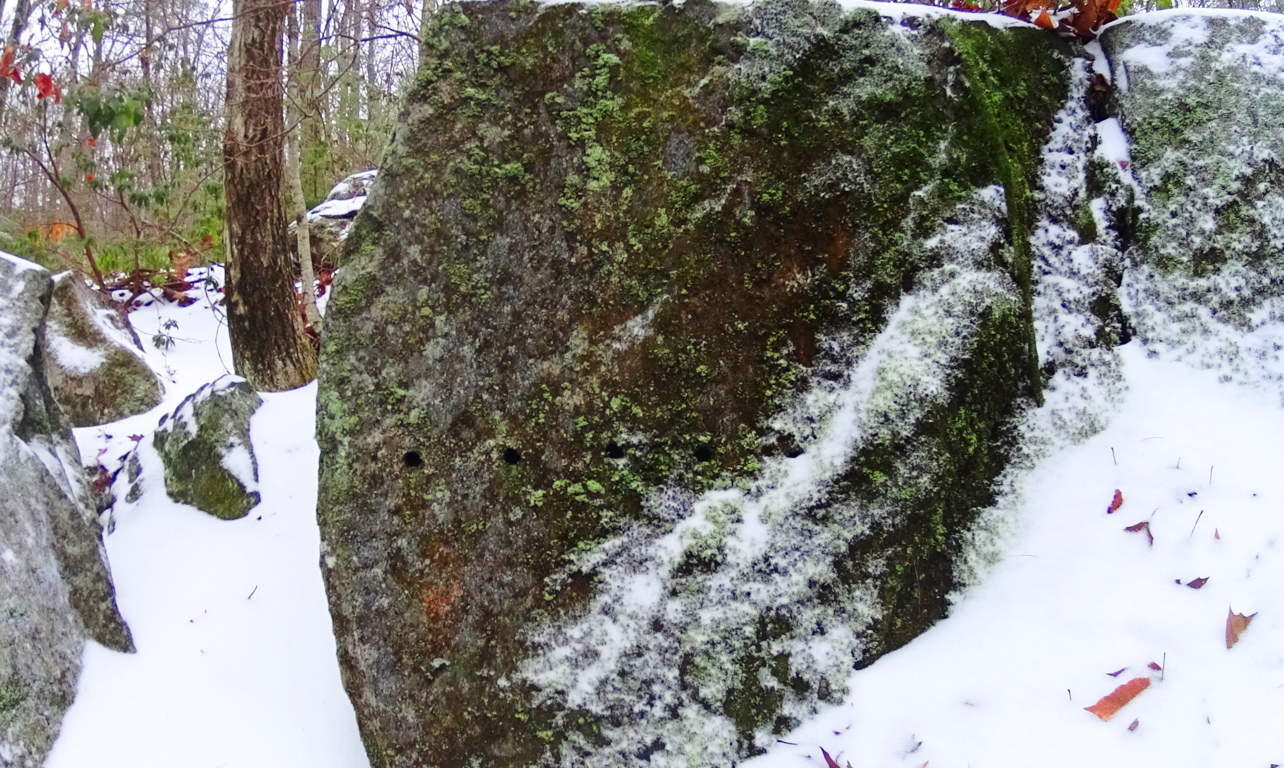 And cuts along the edges of these megaliths are measurements, not random markings. Some of the craft work is truly artistic, revealing a joy in the artistry. Some stones are set in pairs, others are laid out as massive fixtures, seeming to have a functional flare. Hiking through these pathways is a pure wonder that pushes the boundaries of our understanding of what might have taken place clear back to the beginning of Time.
And cuts along the edges of these megaliths are measurements, not random markings. Some of the craft work is truly artistic, revealing a joy in the artistry. Some stones are set in pairs, others are laid out as massive fixtures, seeming to have a functional flare. Hiking through these pathways is a pure wonder that pushes the boundaries of our understanding of what might have taken place clear back to the beginning of Time.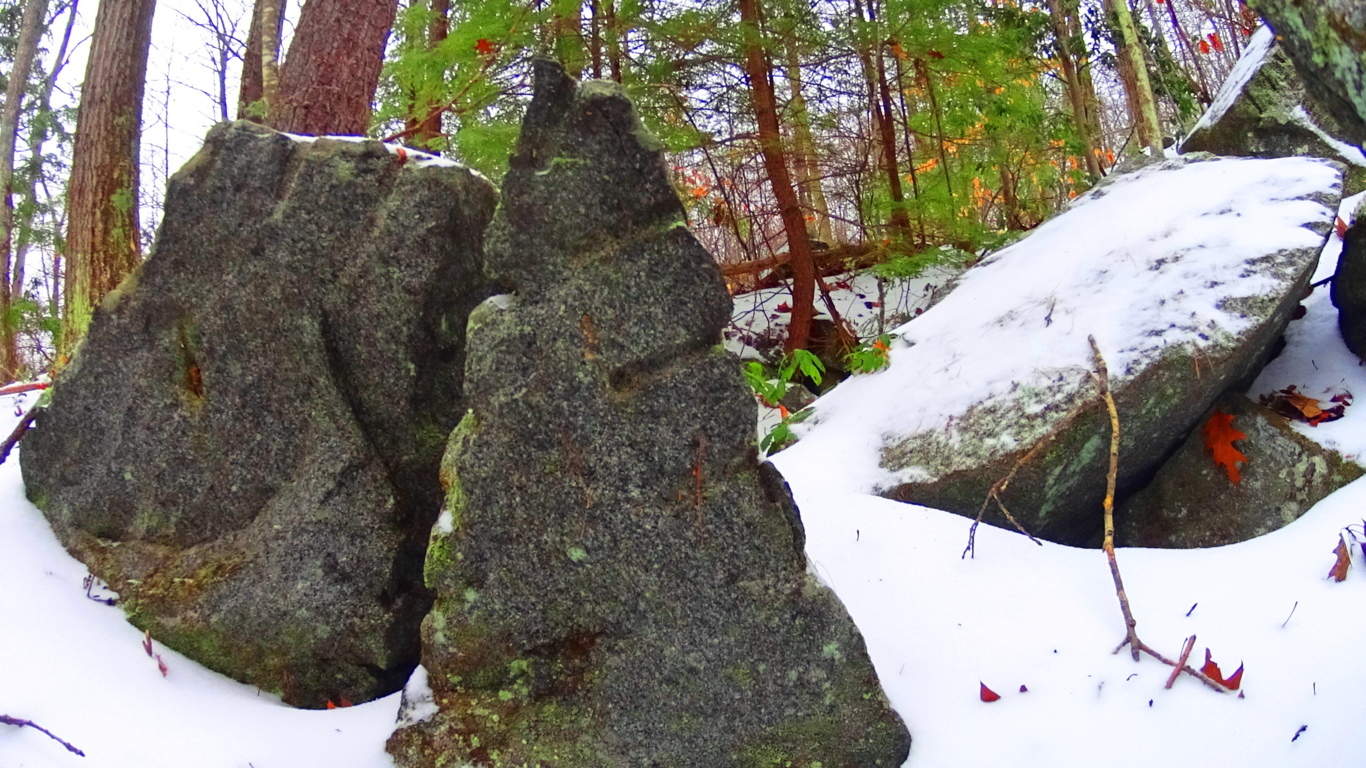 The stones themselves seem to insist that it may not be the linear evolutionary line that postmodern texts have been pushing for the last 100 years. It is clear that technology existed in antiquity, and was utilized in this incredible daydream of a forest. On an international scale of 1 to 10 for sacred forests, Tully Lake is a 15. Seek and find it out for yourself, something truly magical took place here.
The stones themselves seem to insist that it may not be the linear evolutionary line that postmodern texts have been pushing for the last 100 years. It is clear that technology existed in antiquity, and was utilized in this incredible daydream of a forest. On an international scale of 1 to 10 for sacred forests, Tully Lake is a 15. Seek and find it out for yourself, something truly magical took place here.